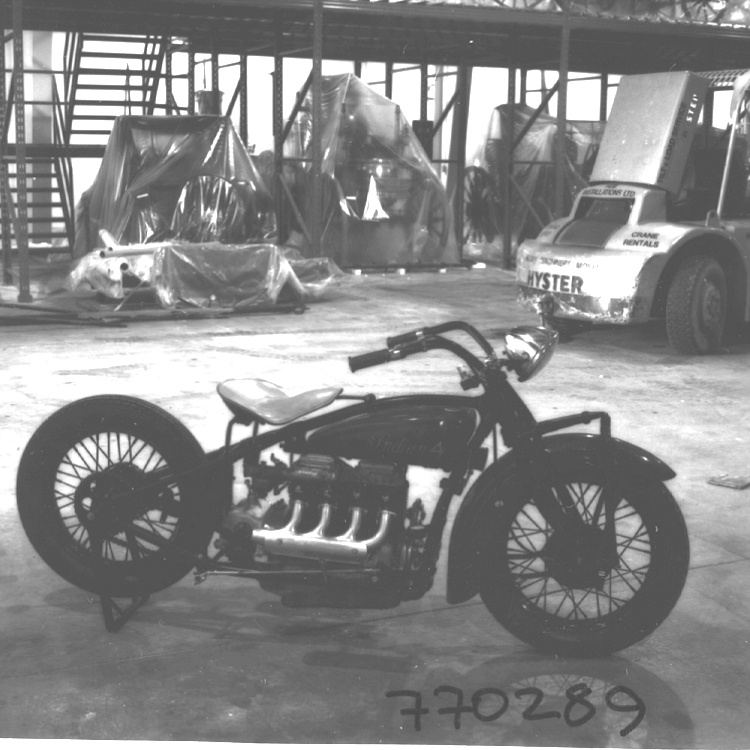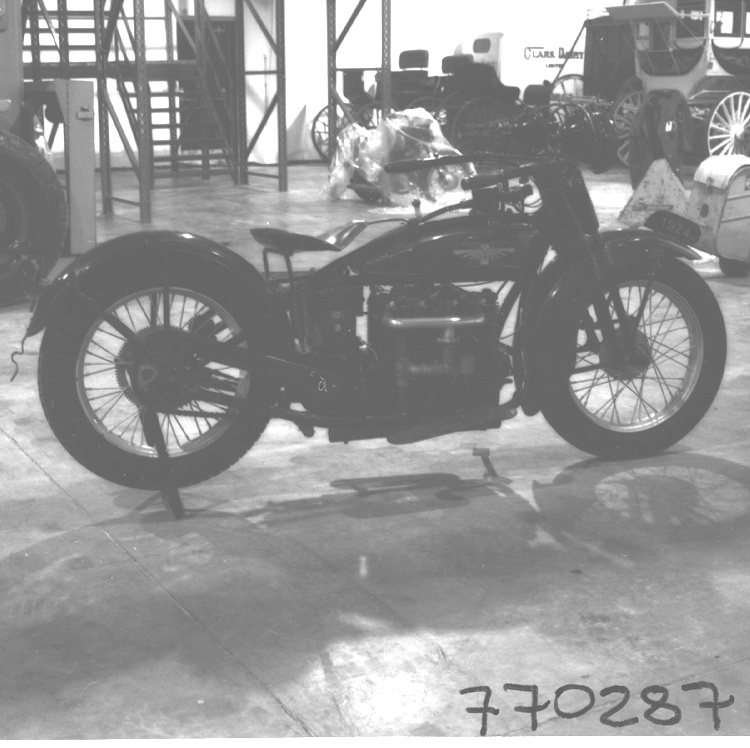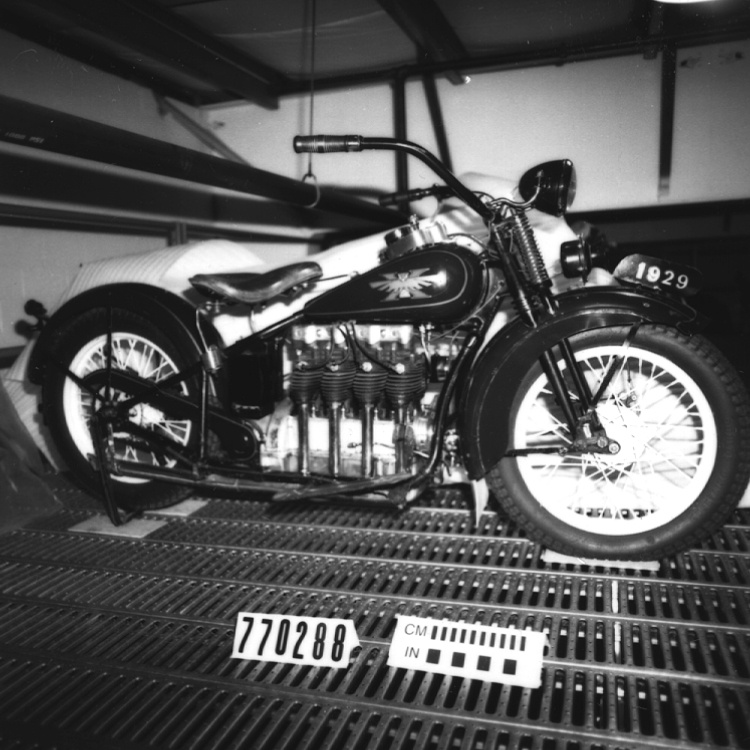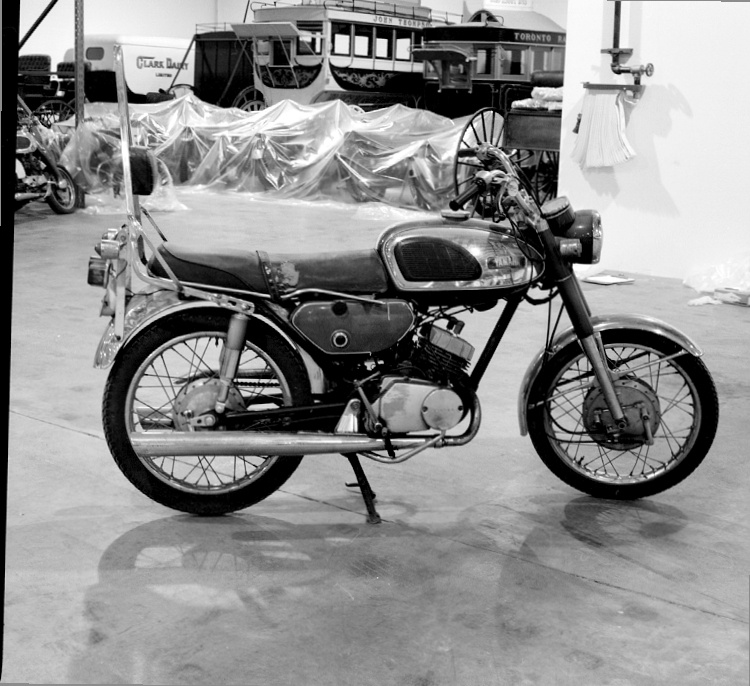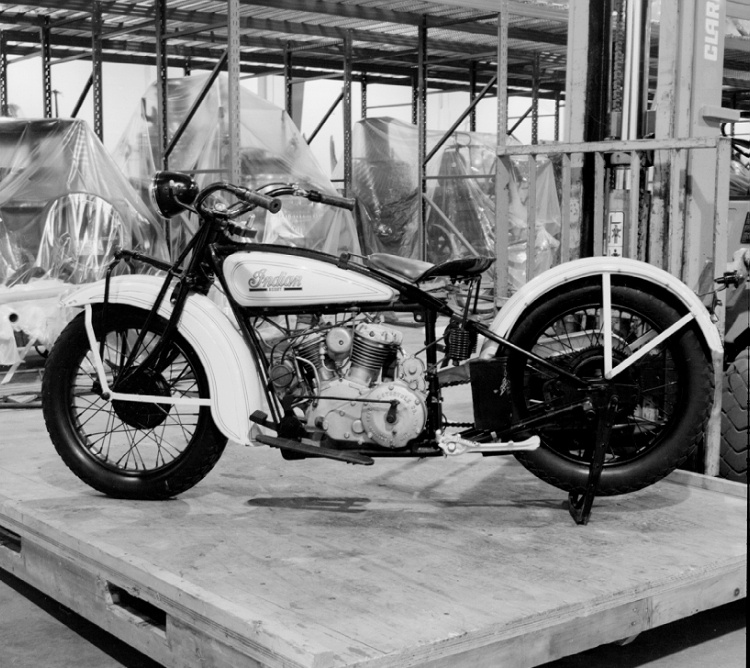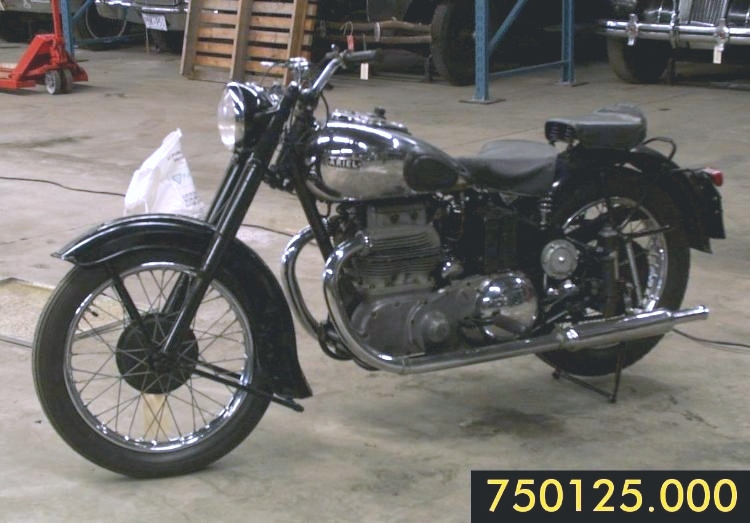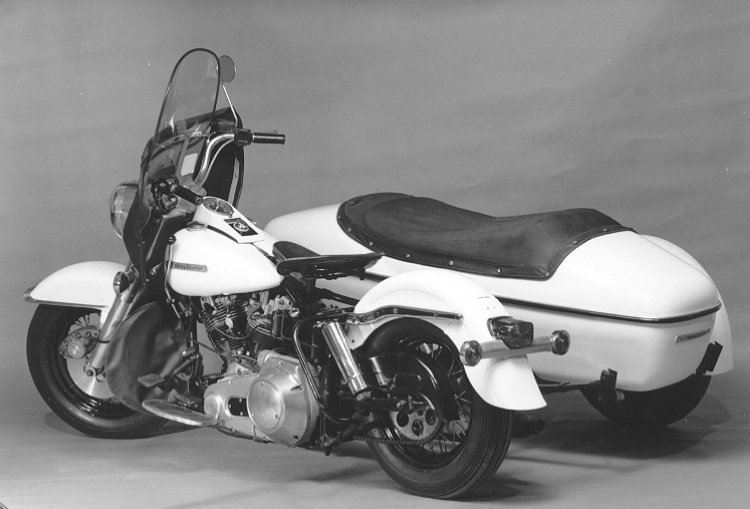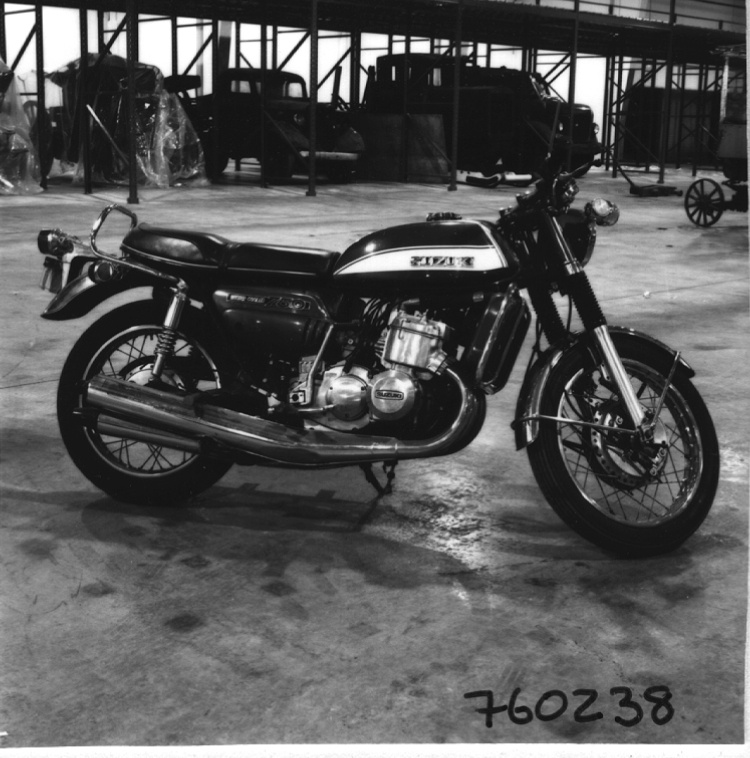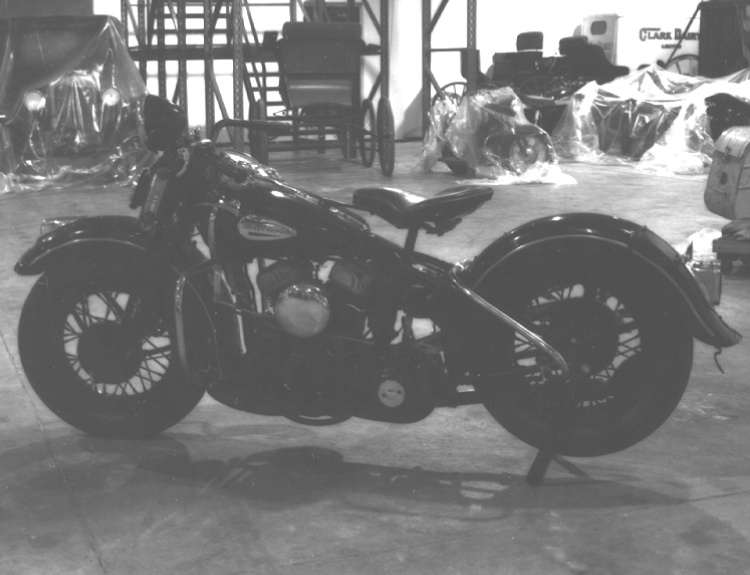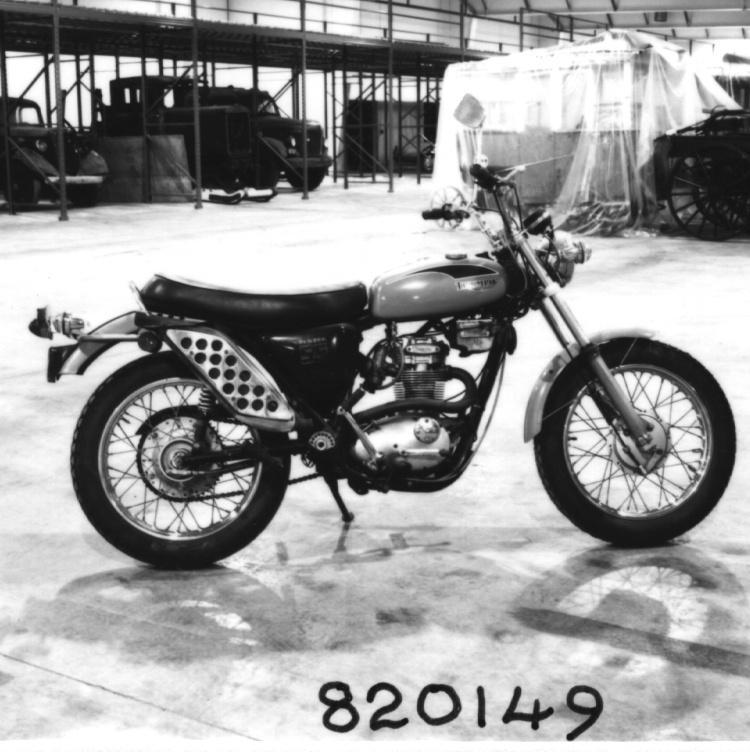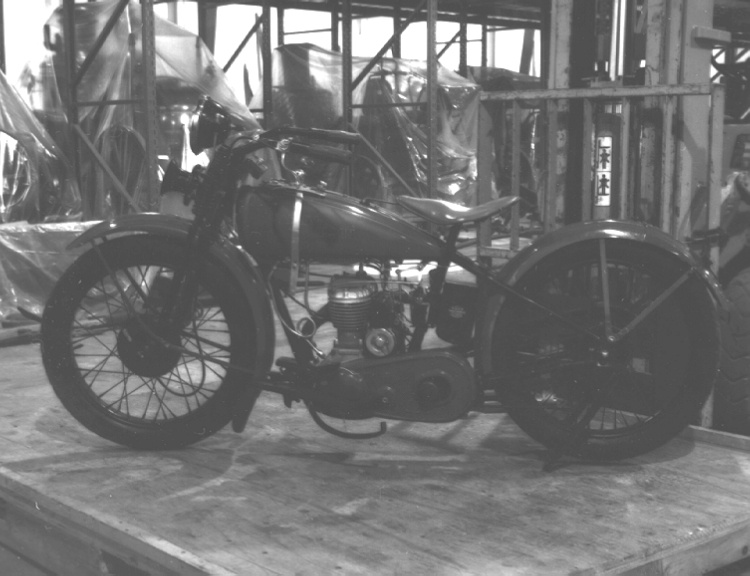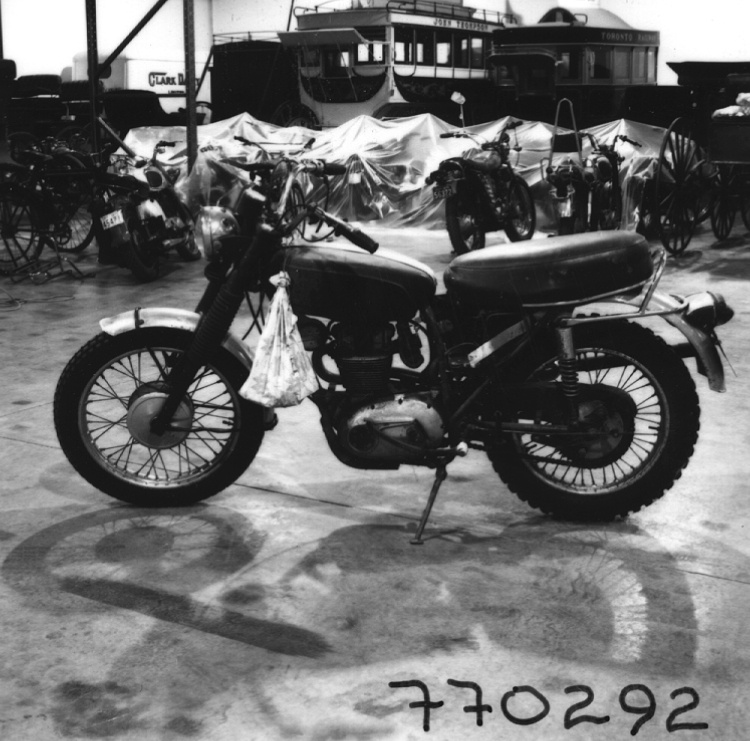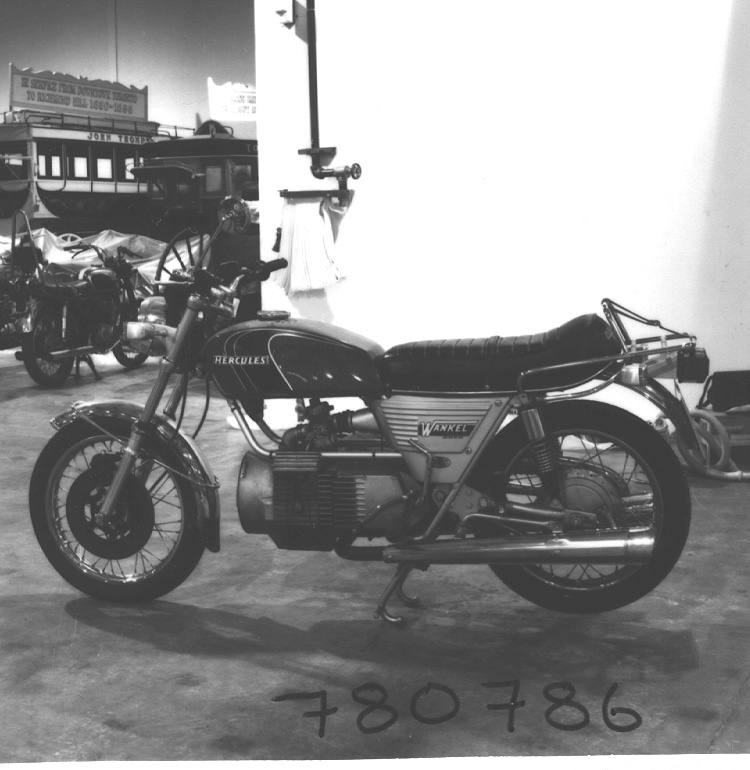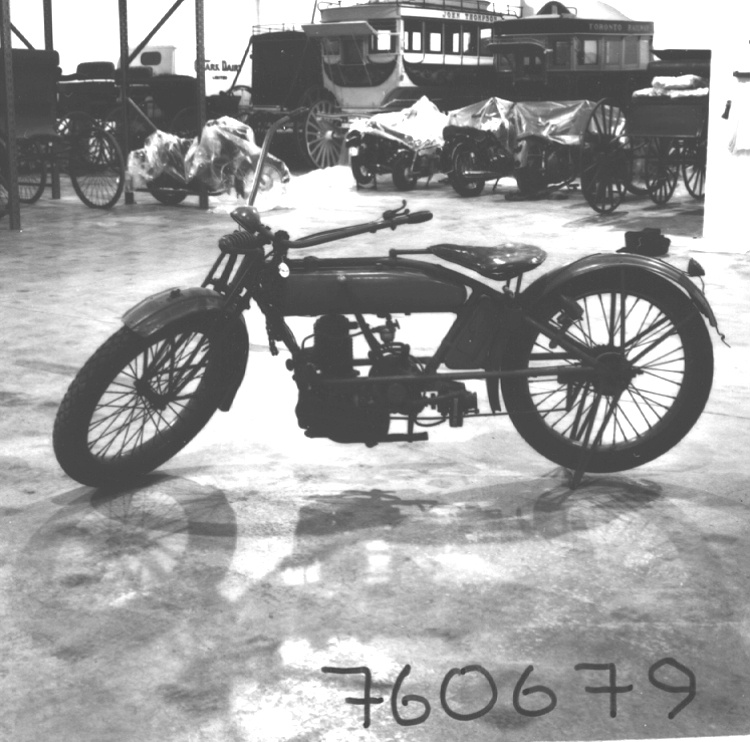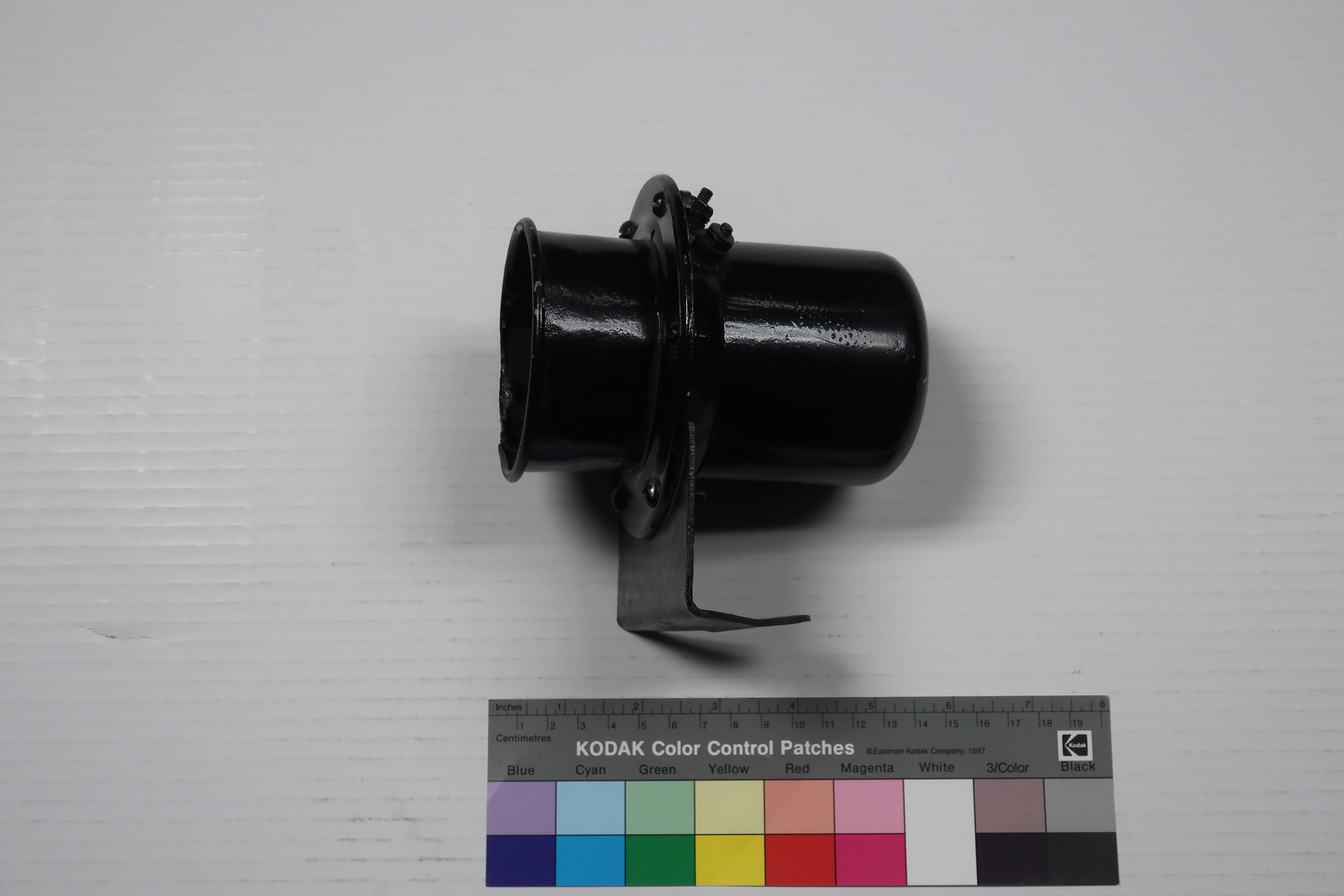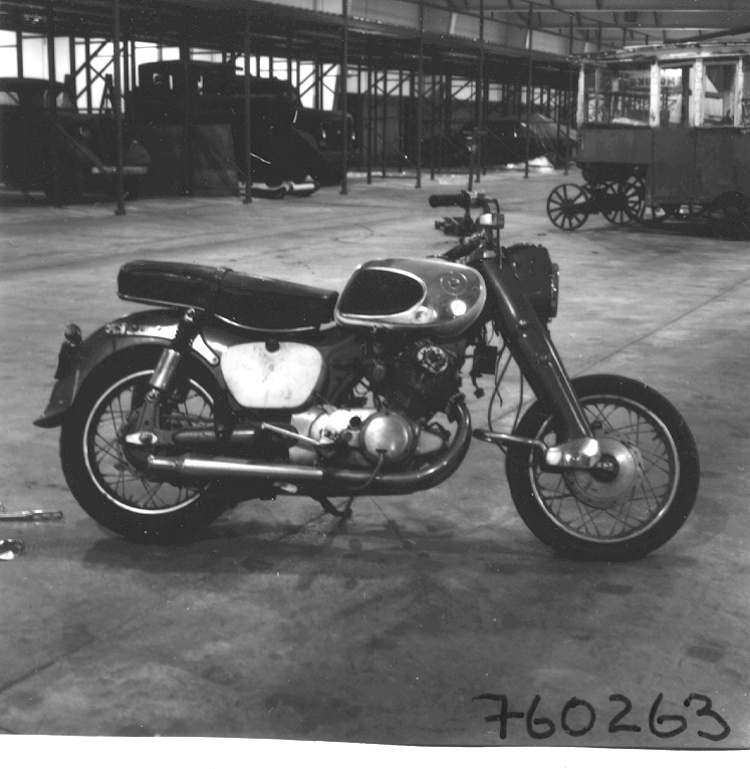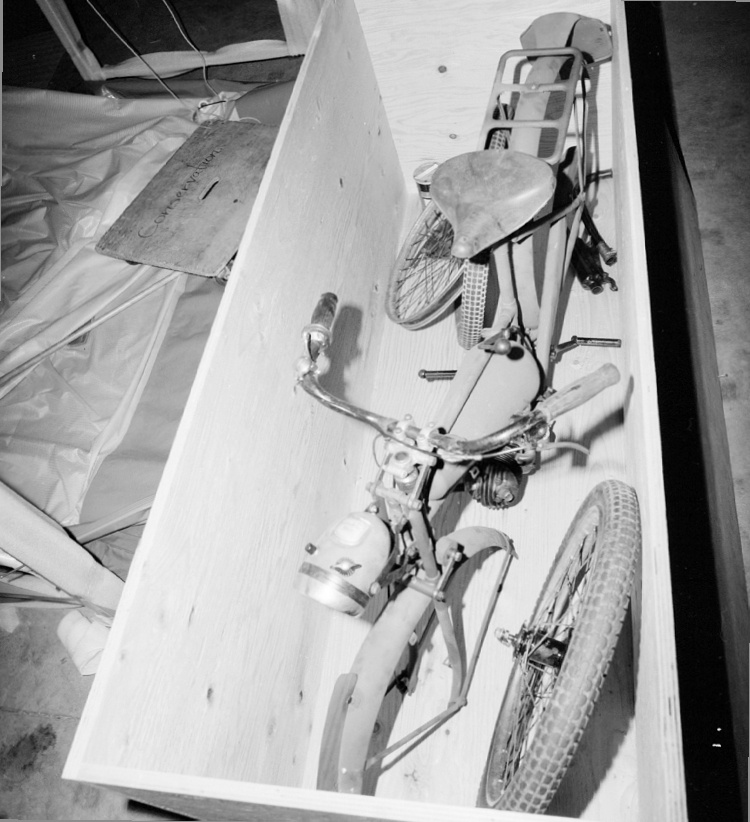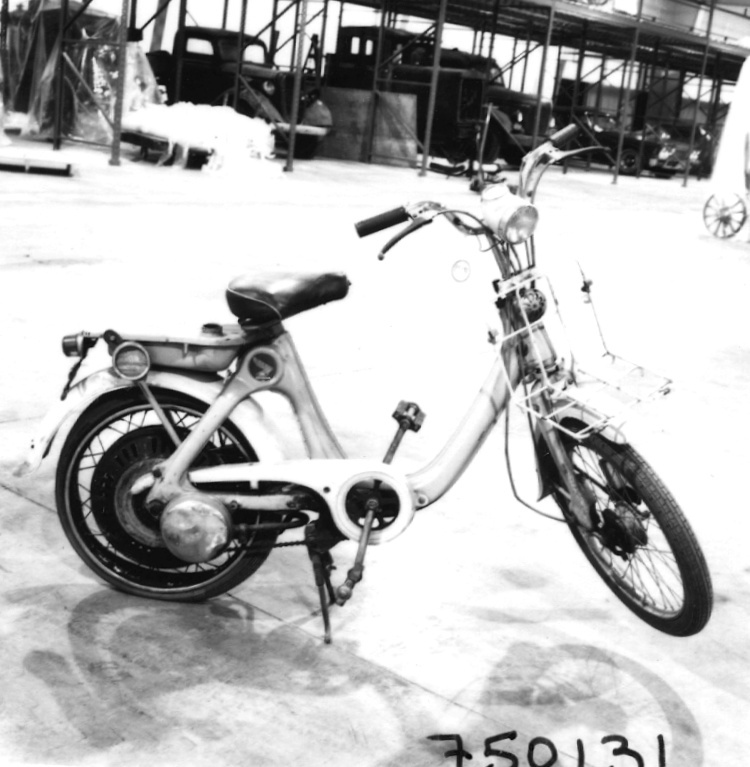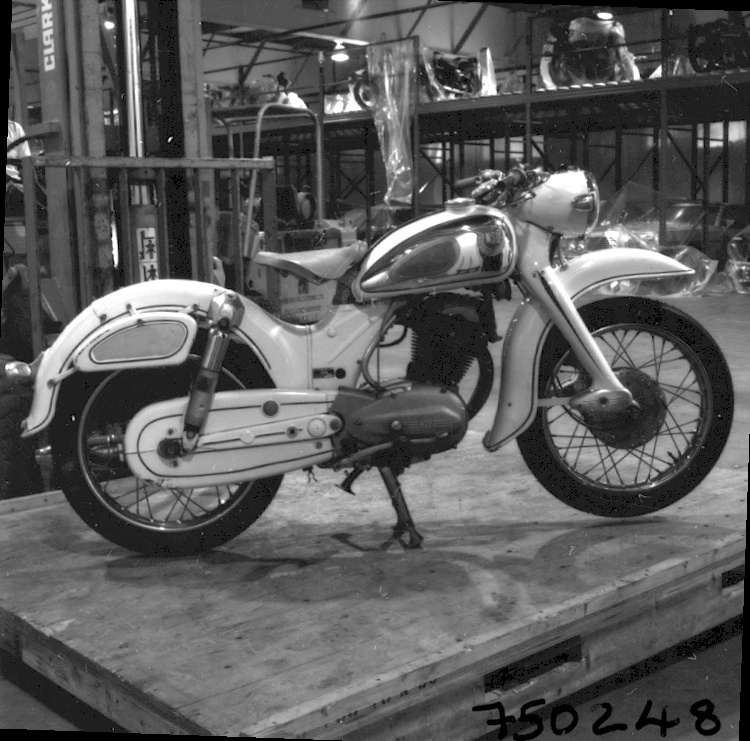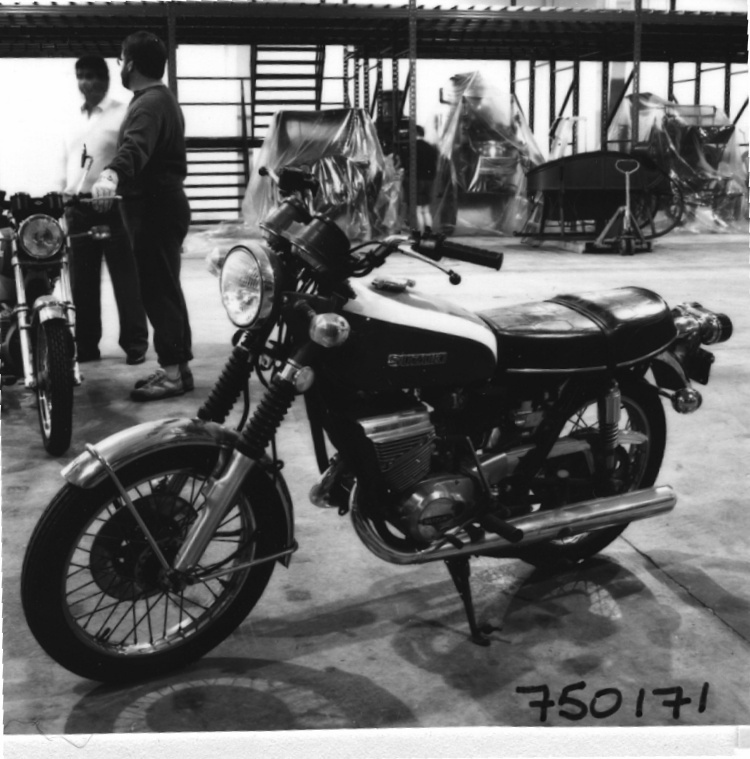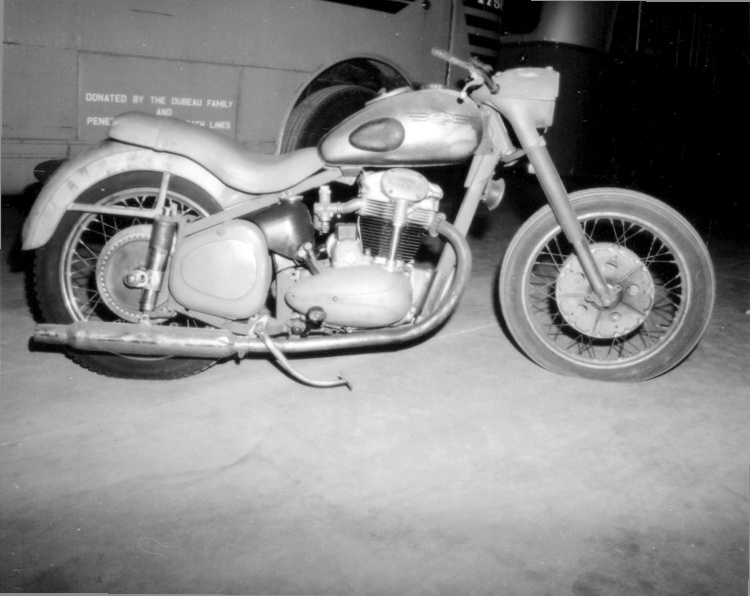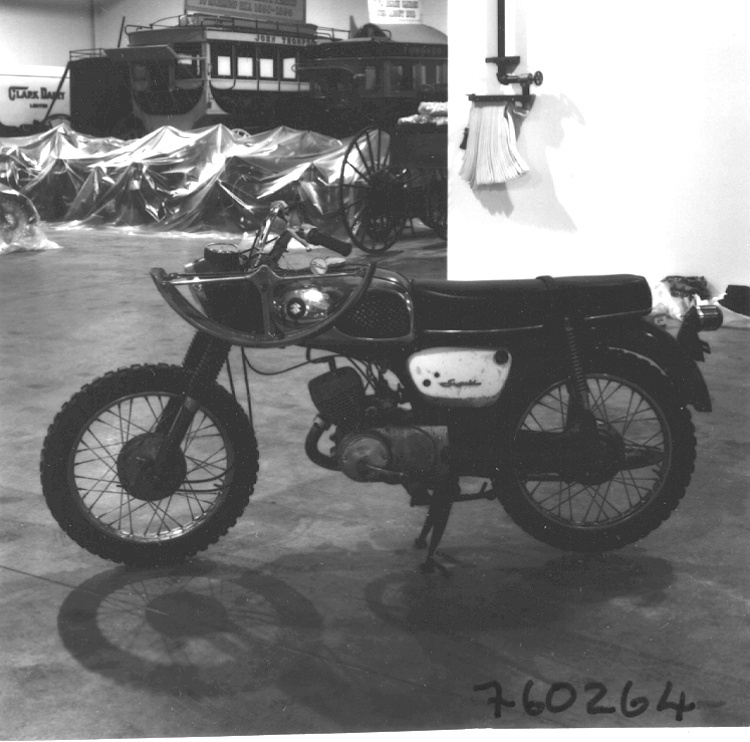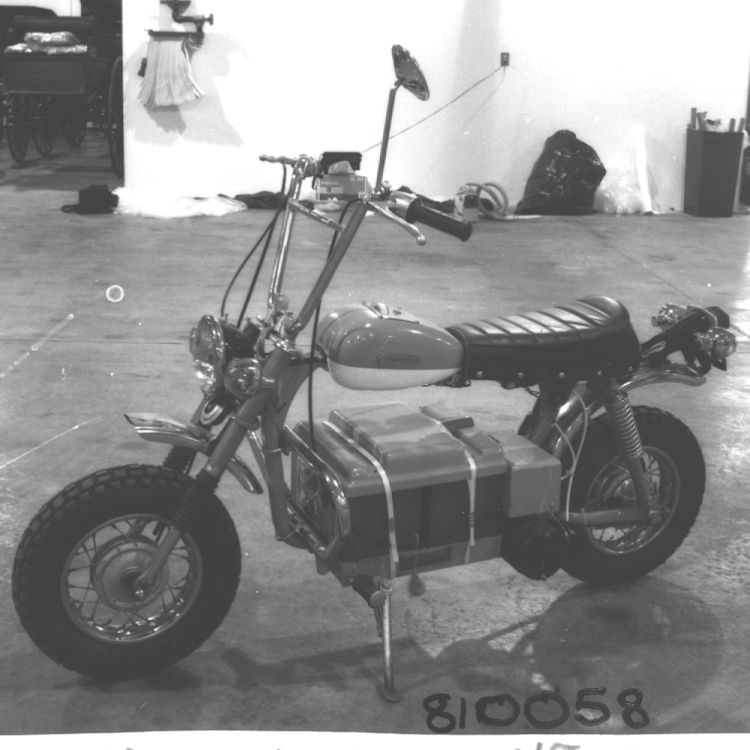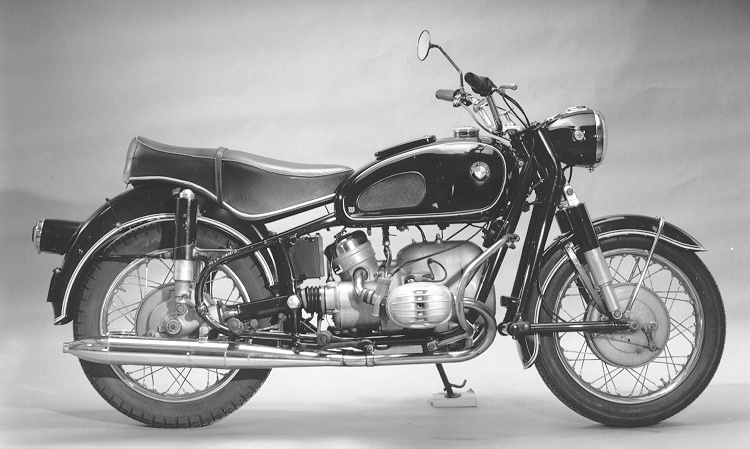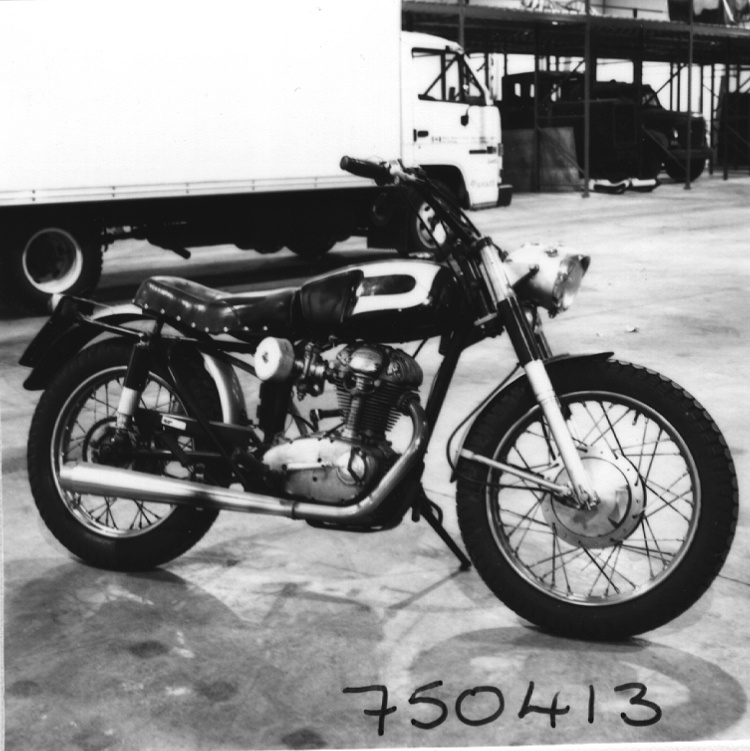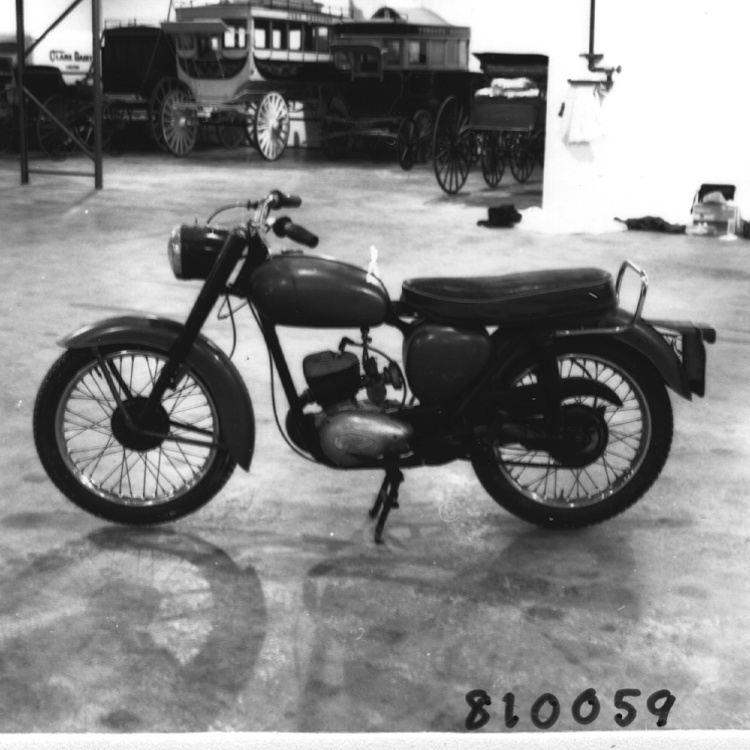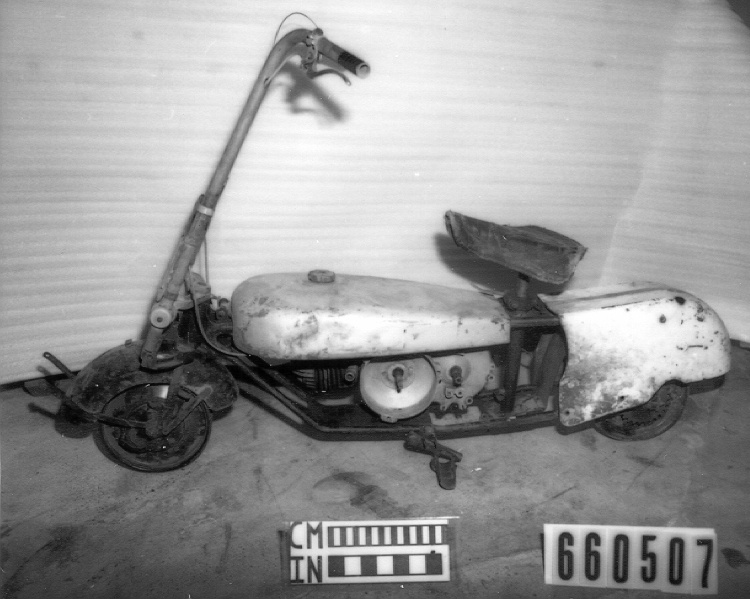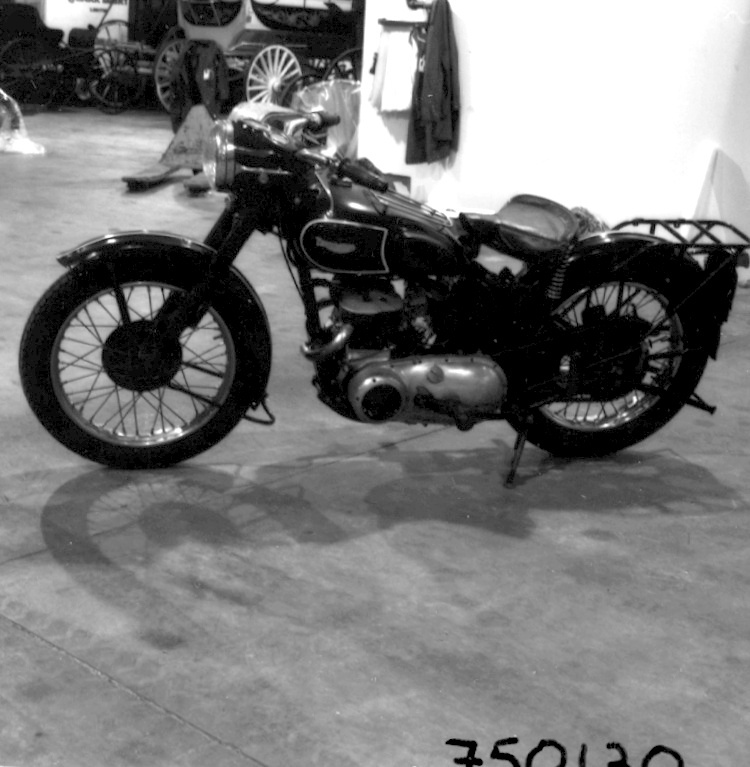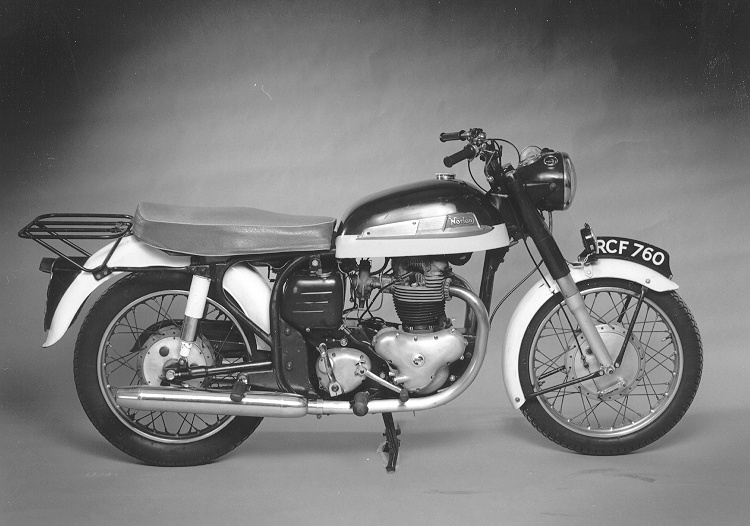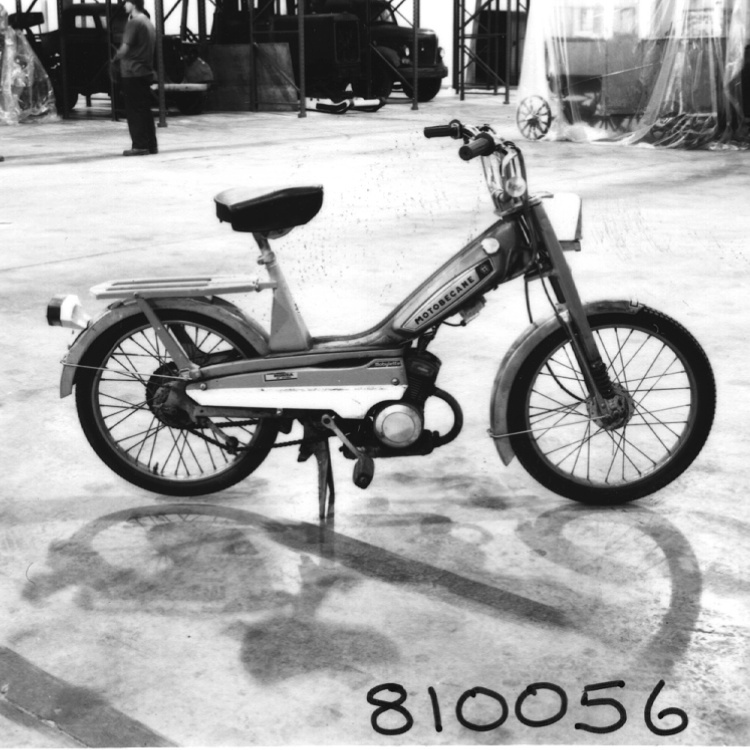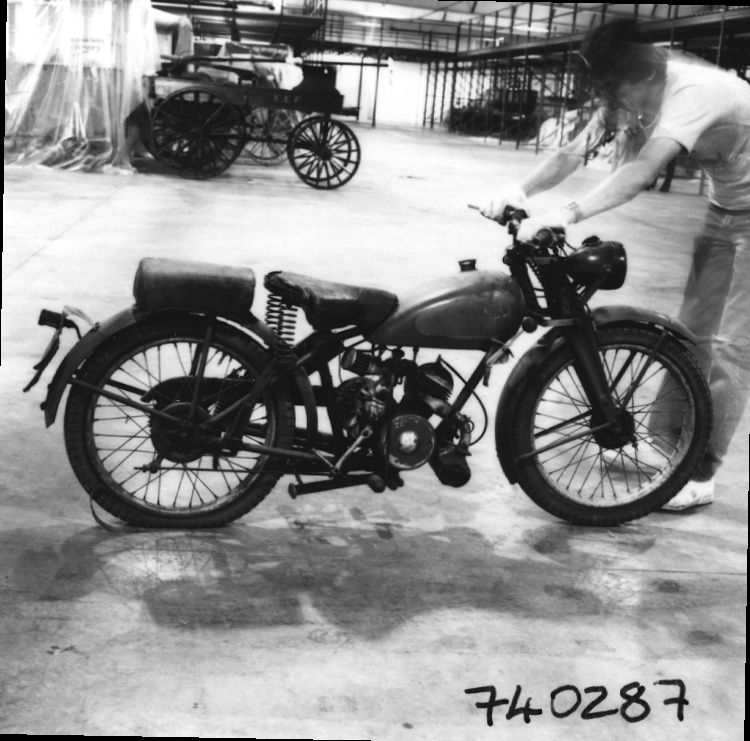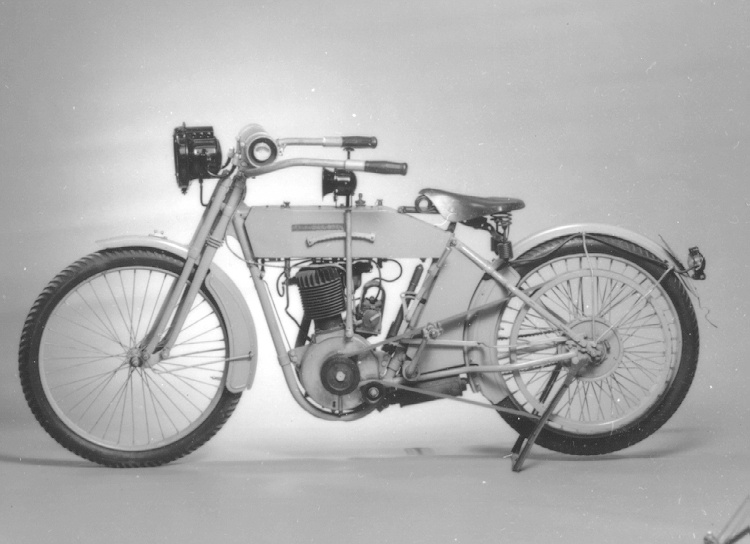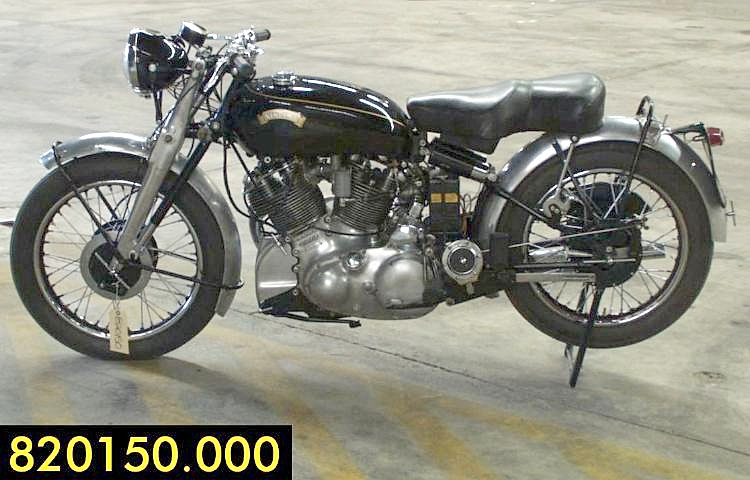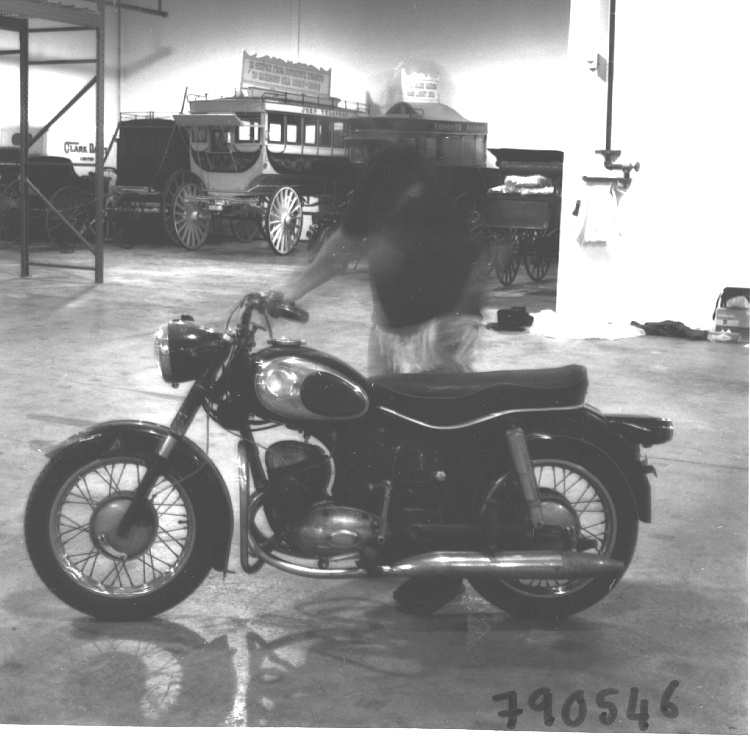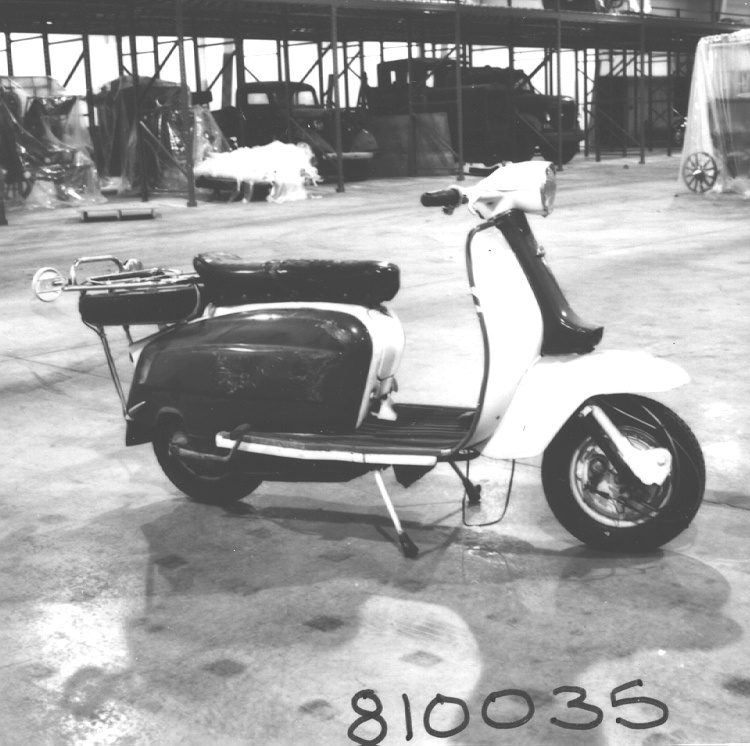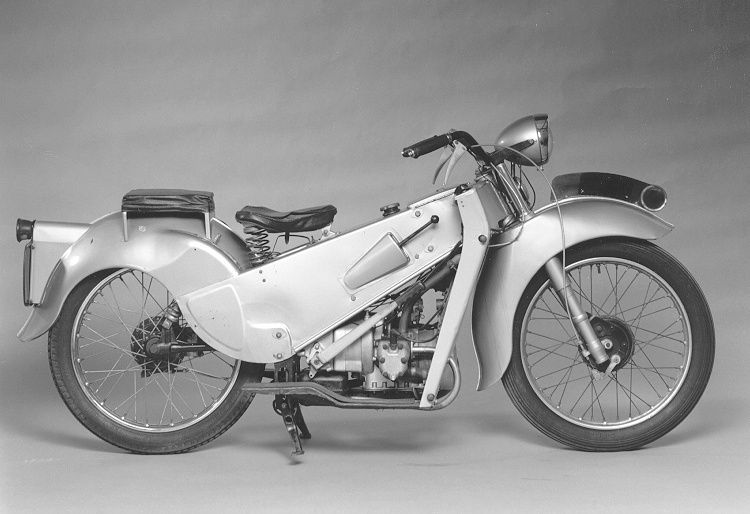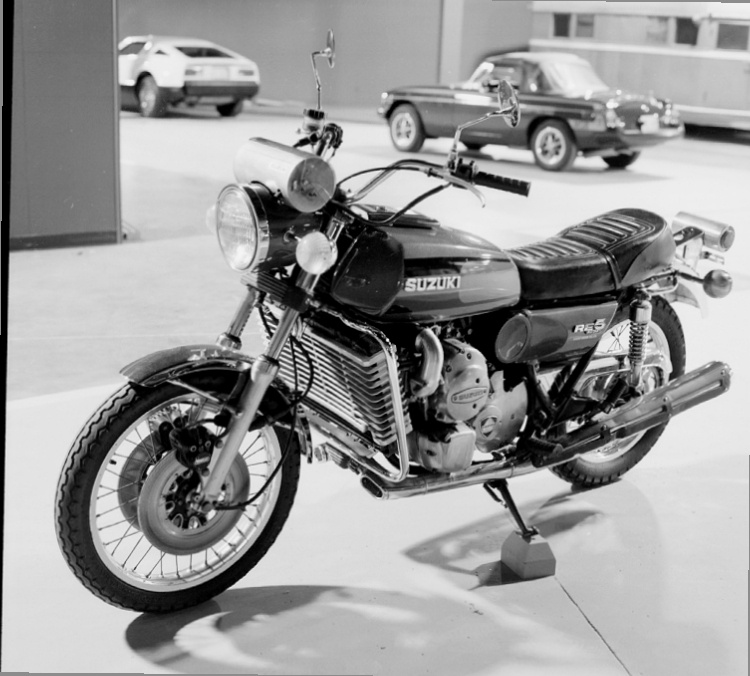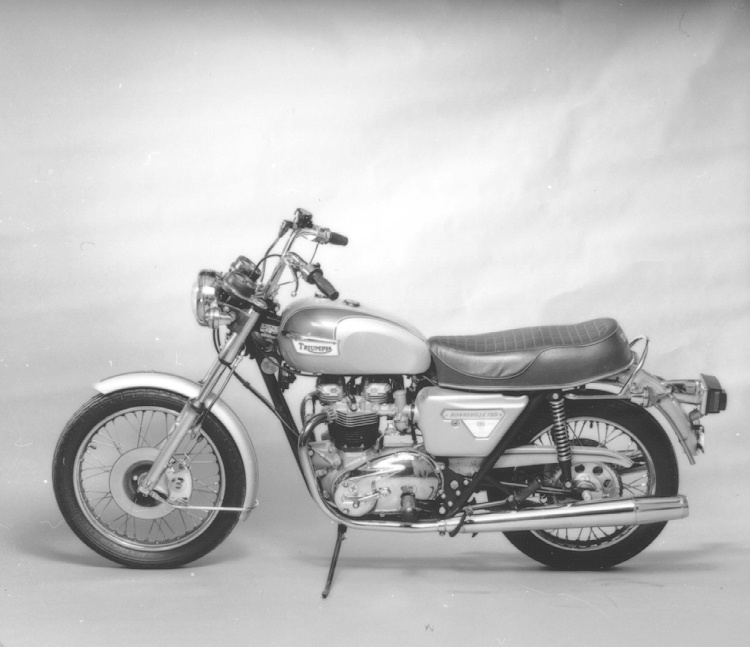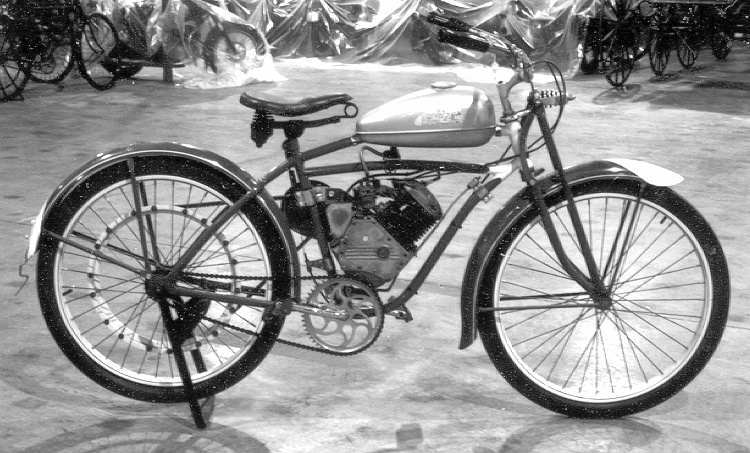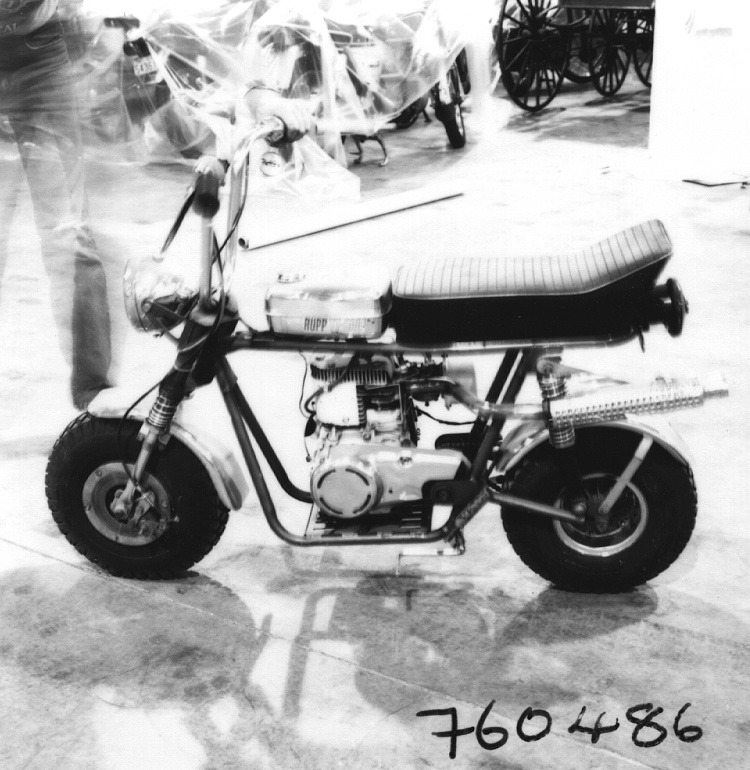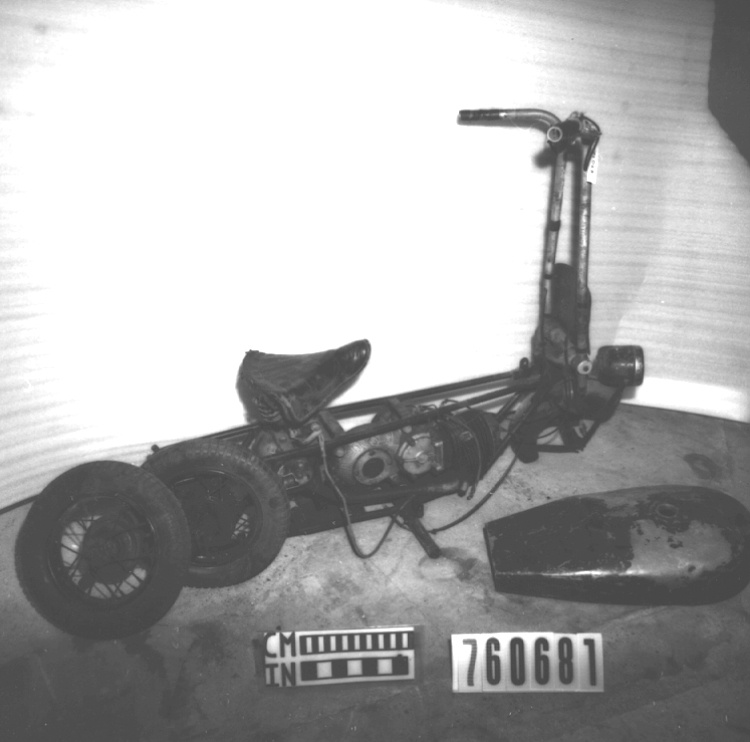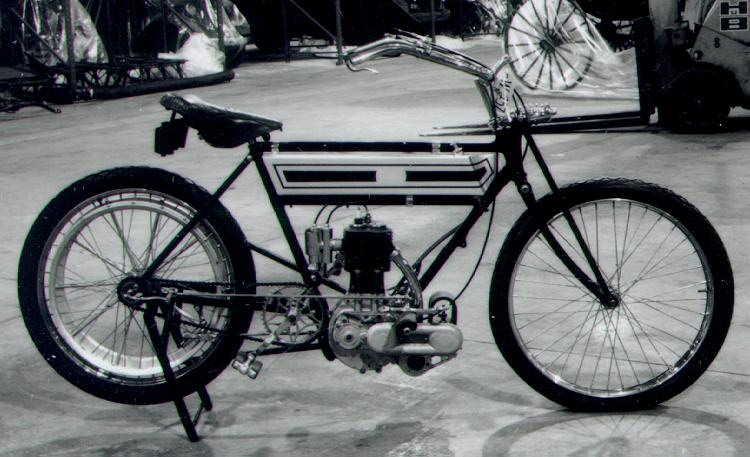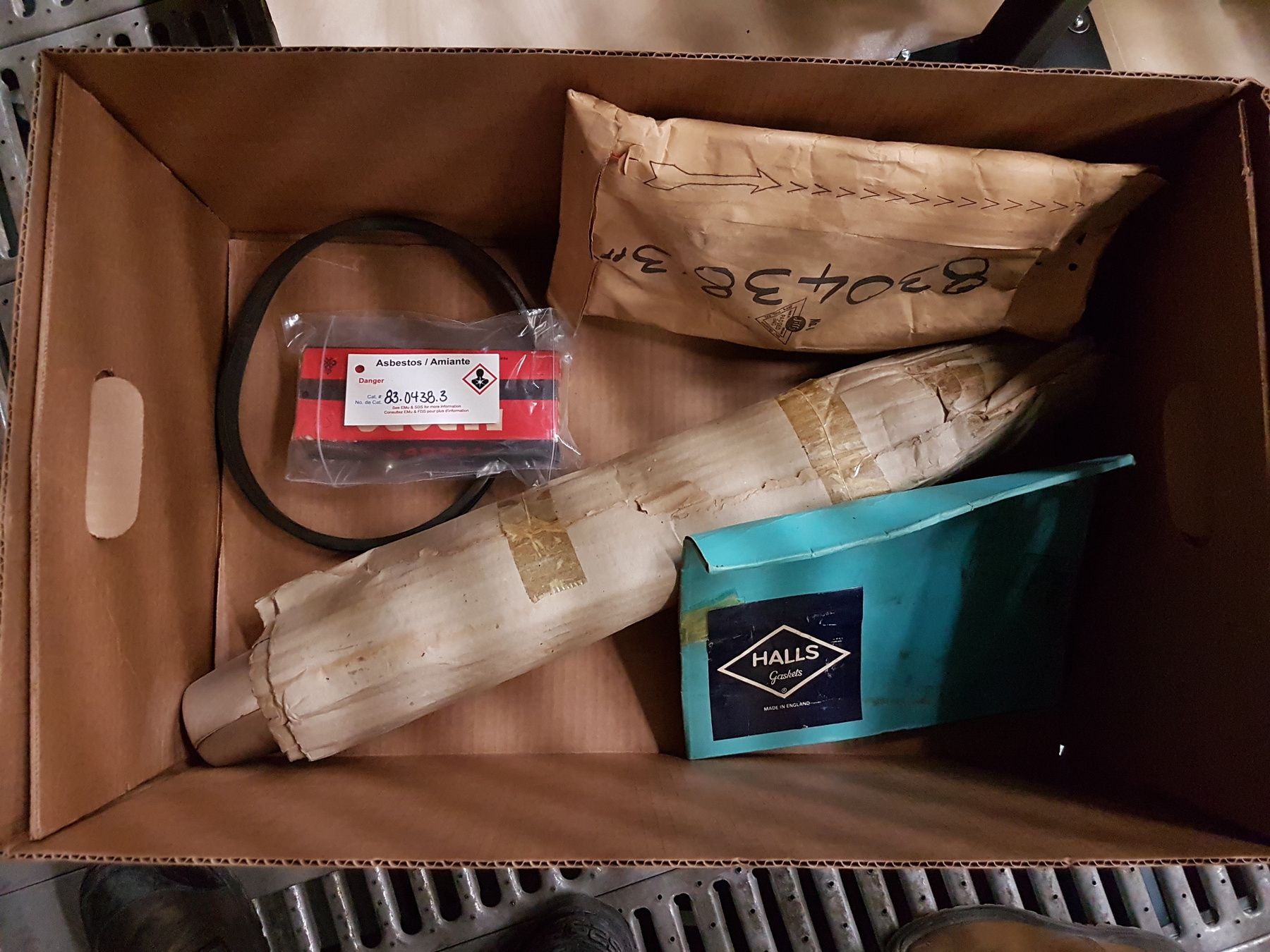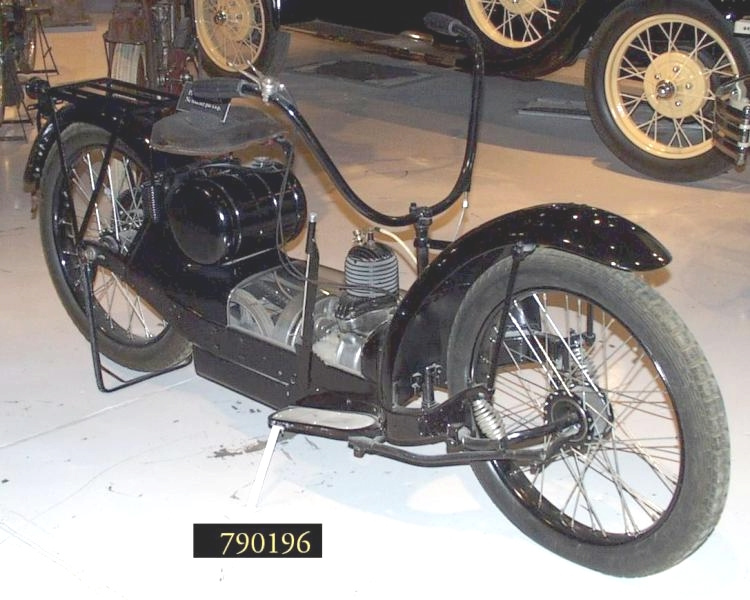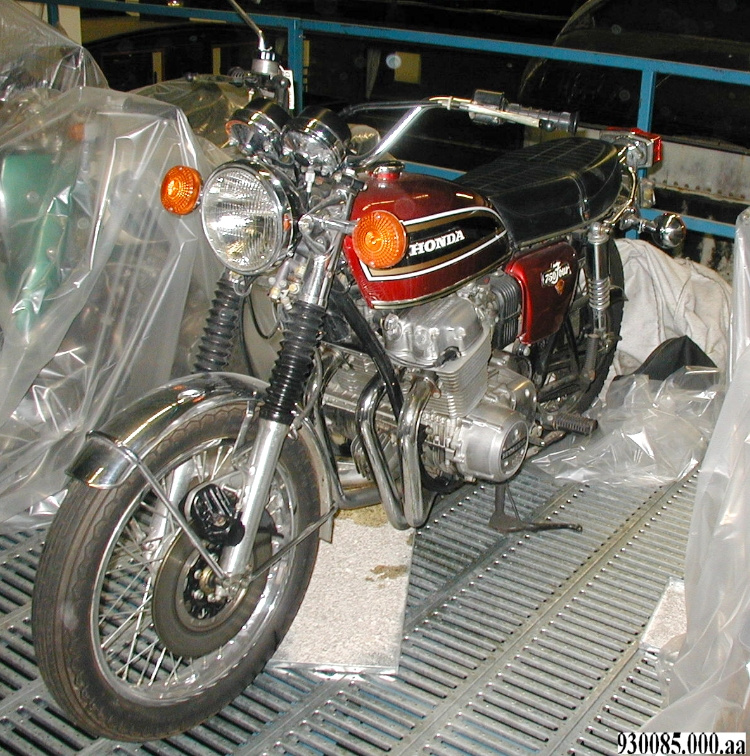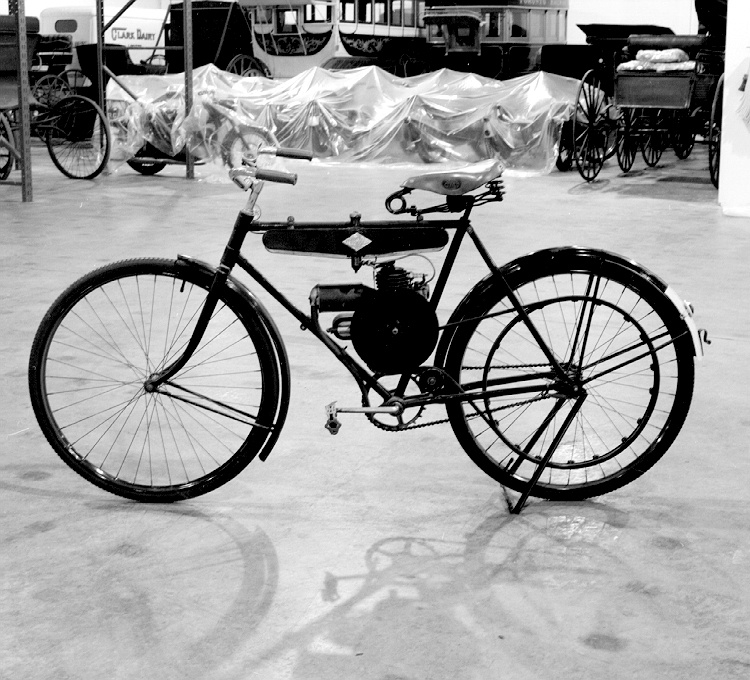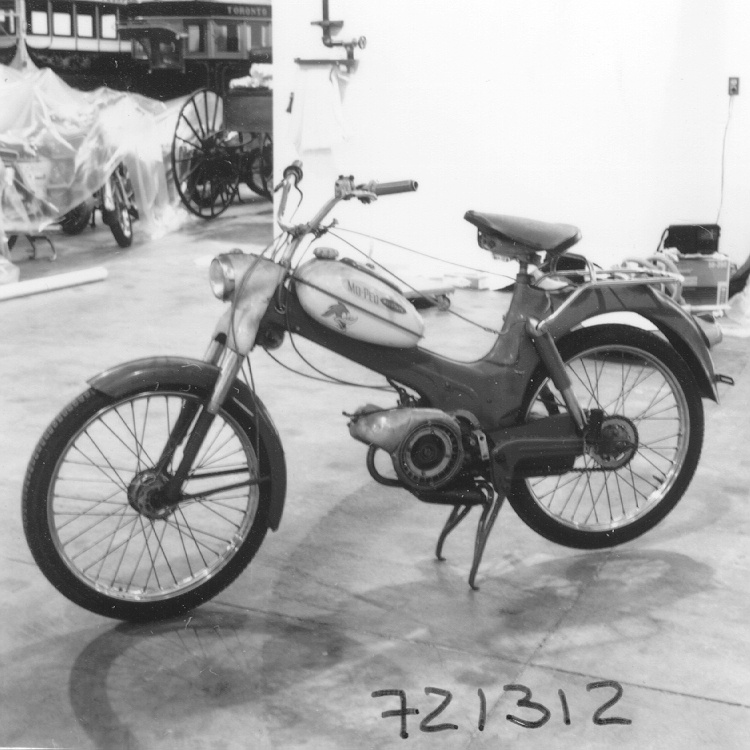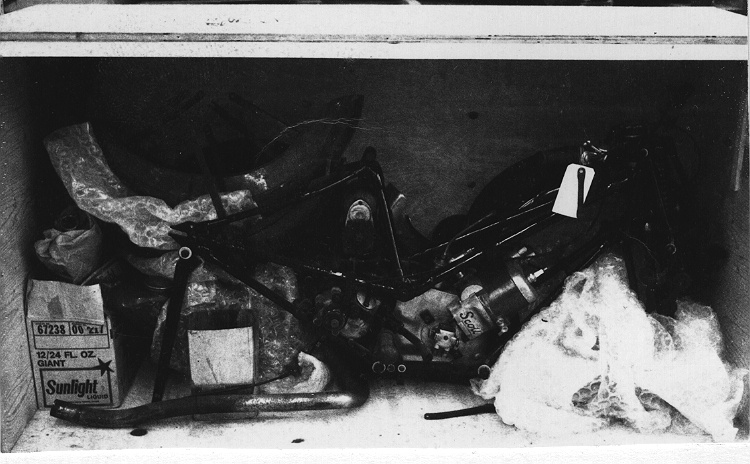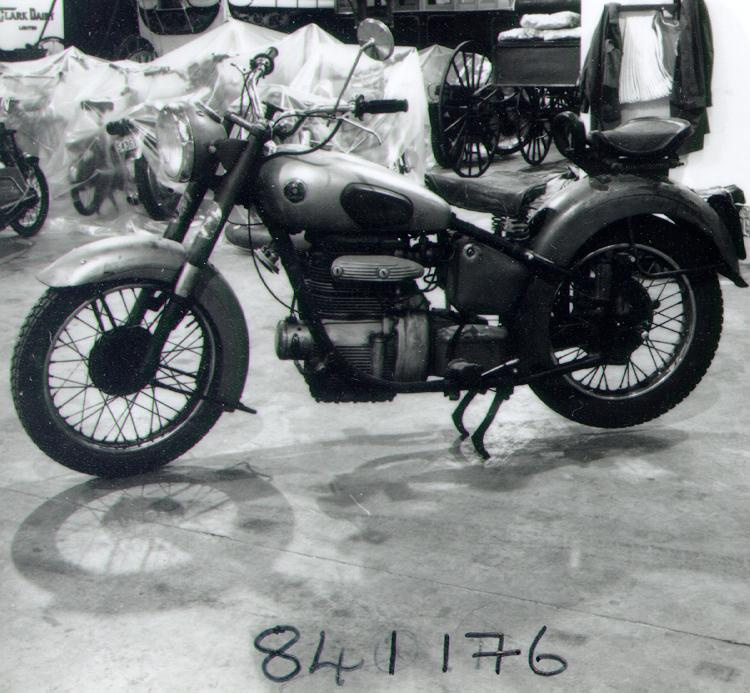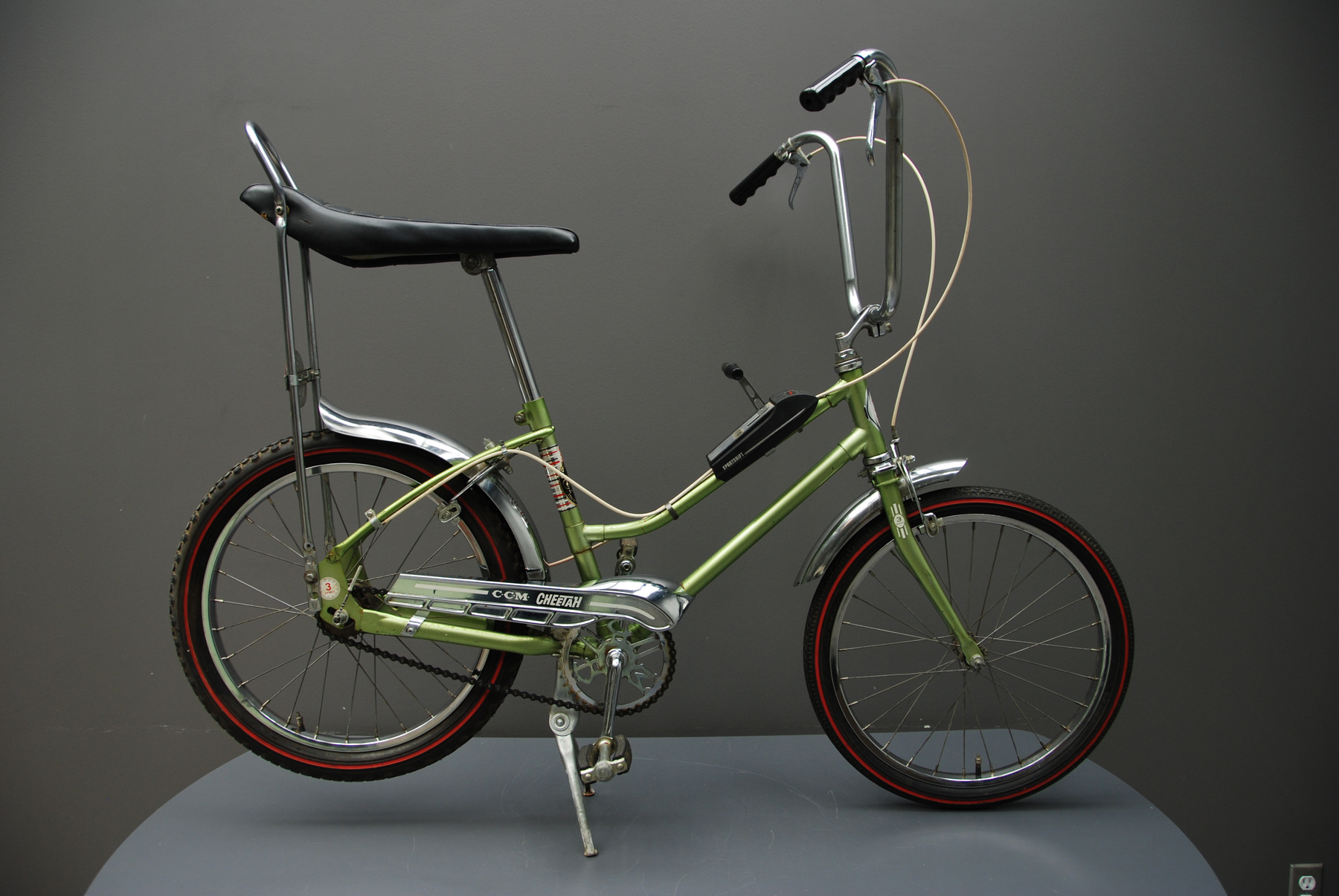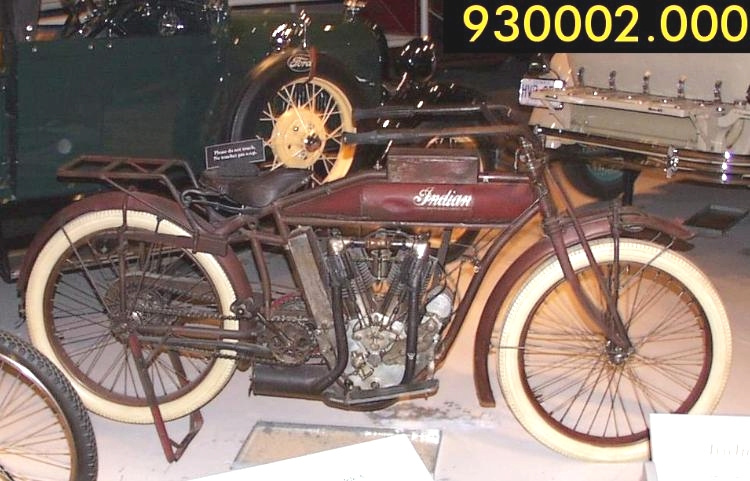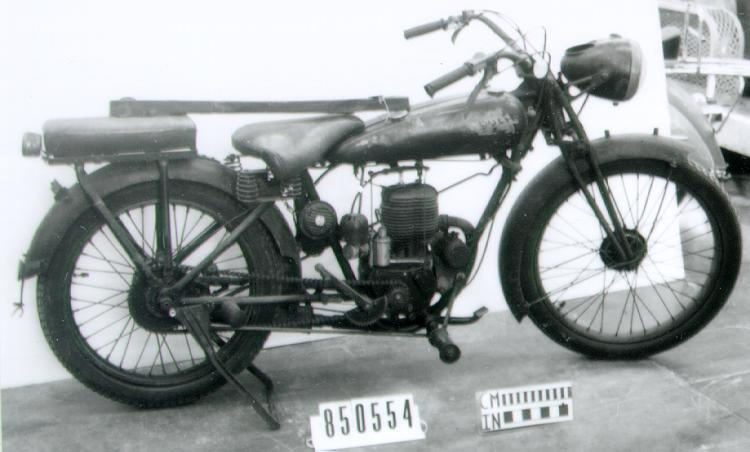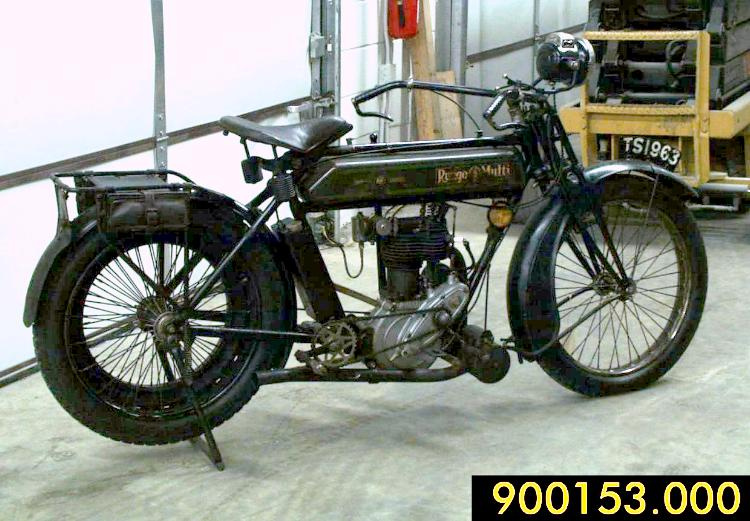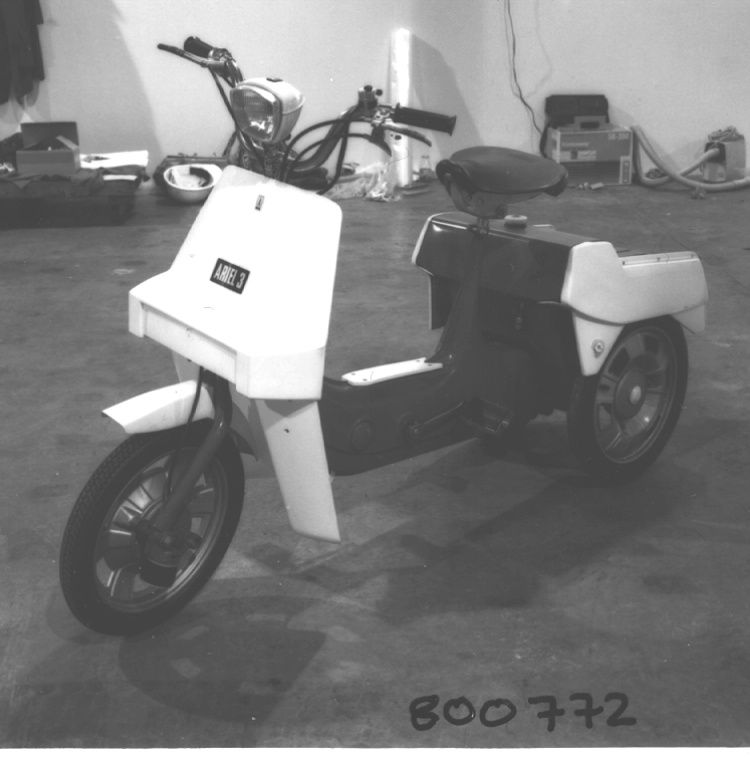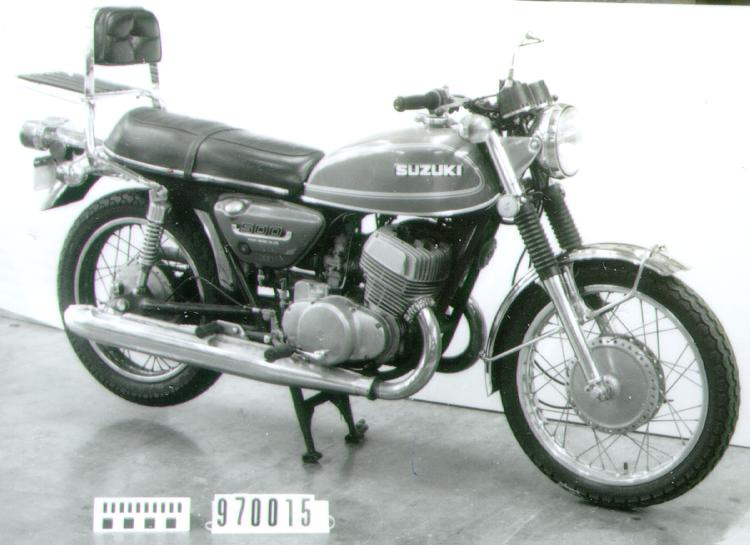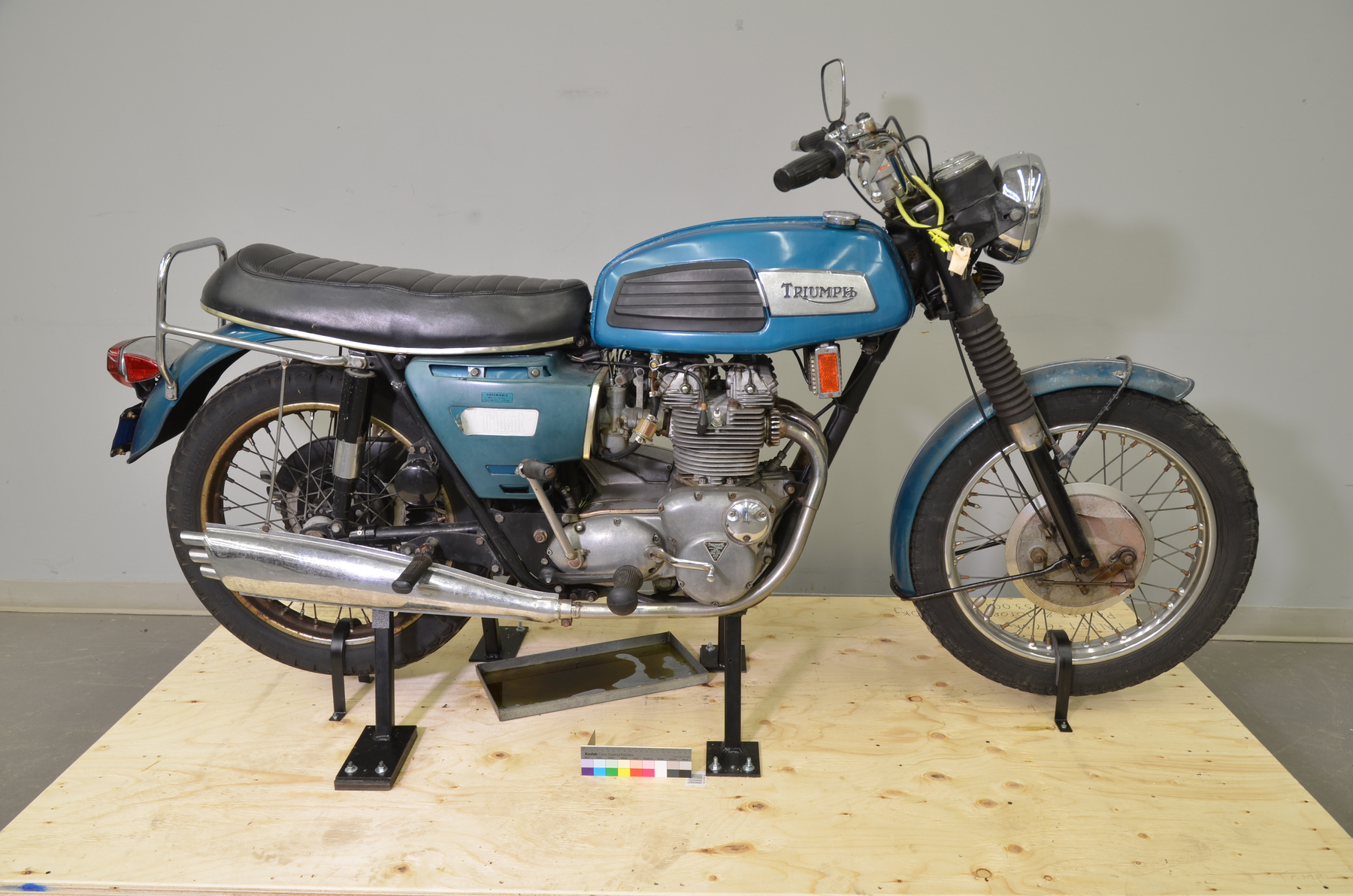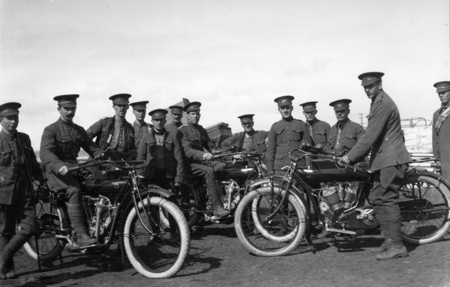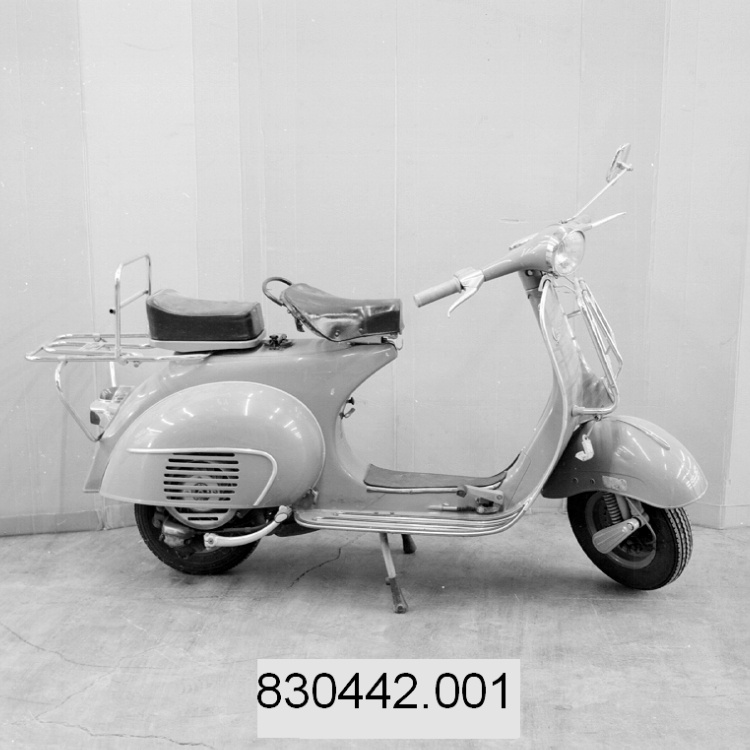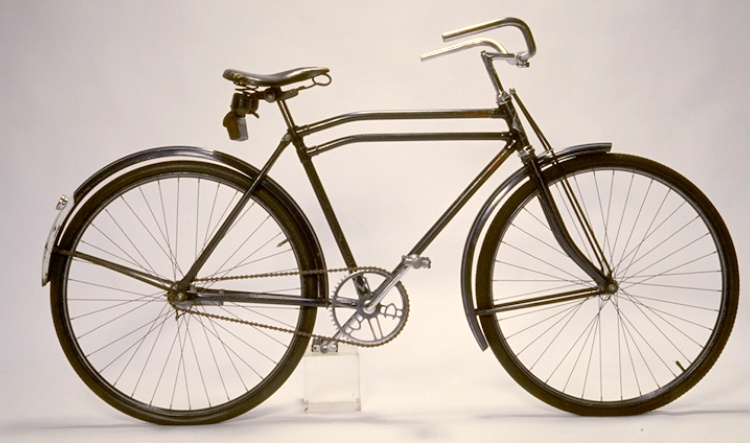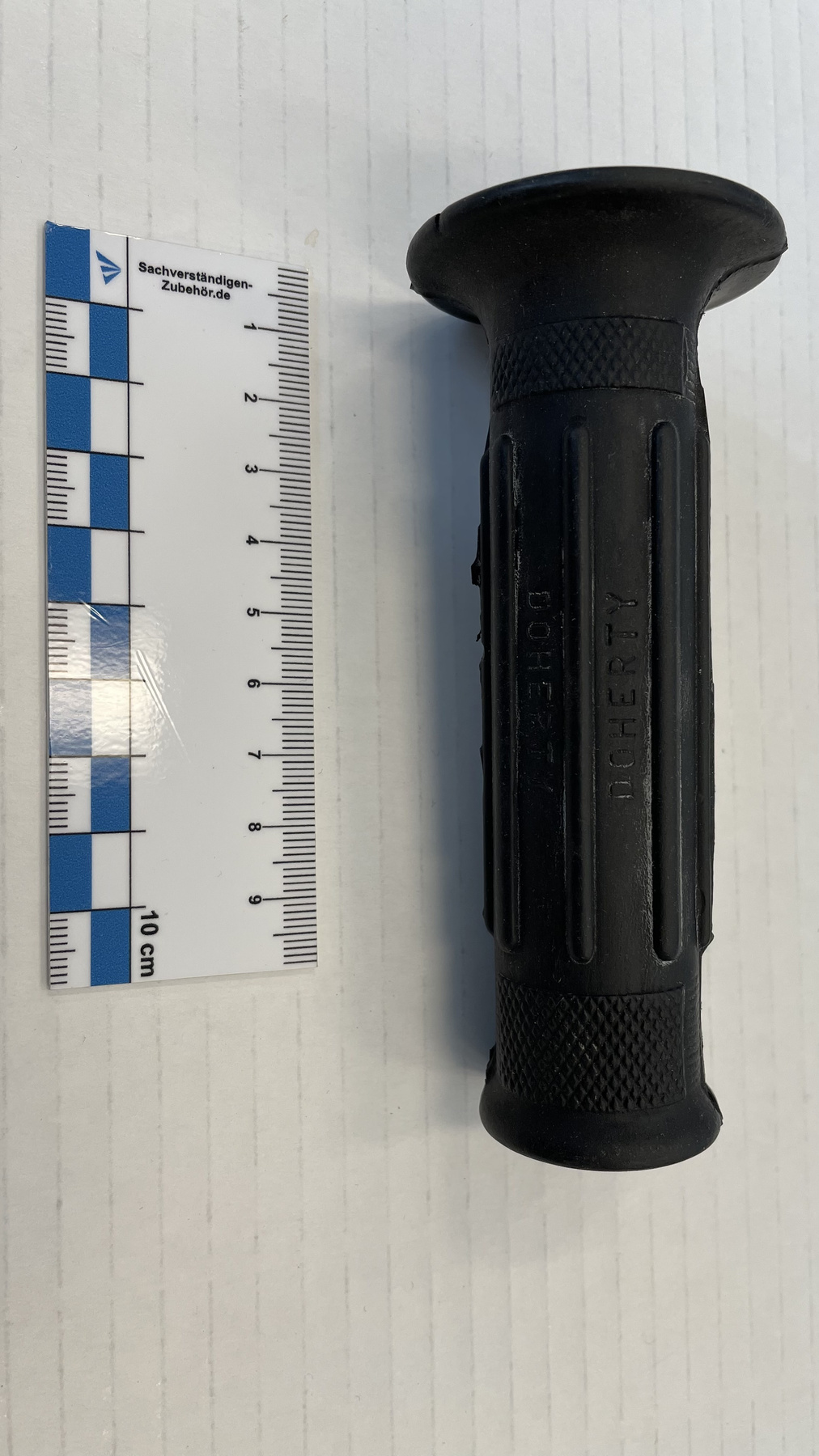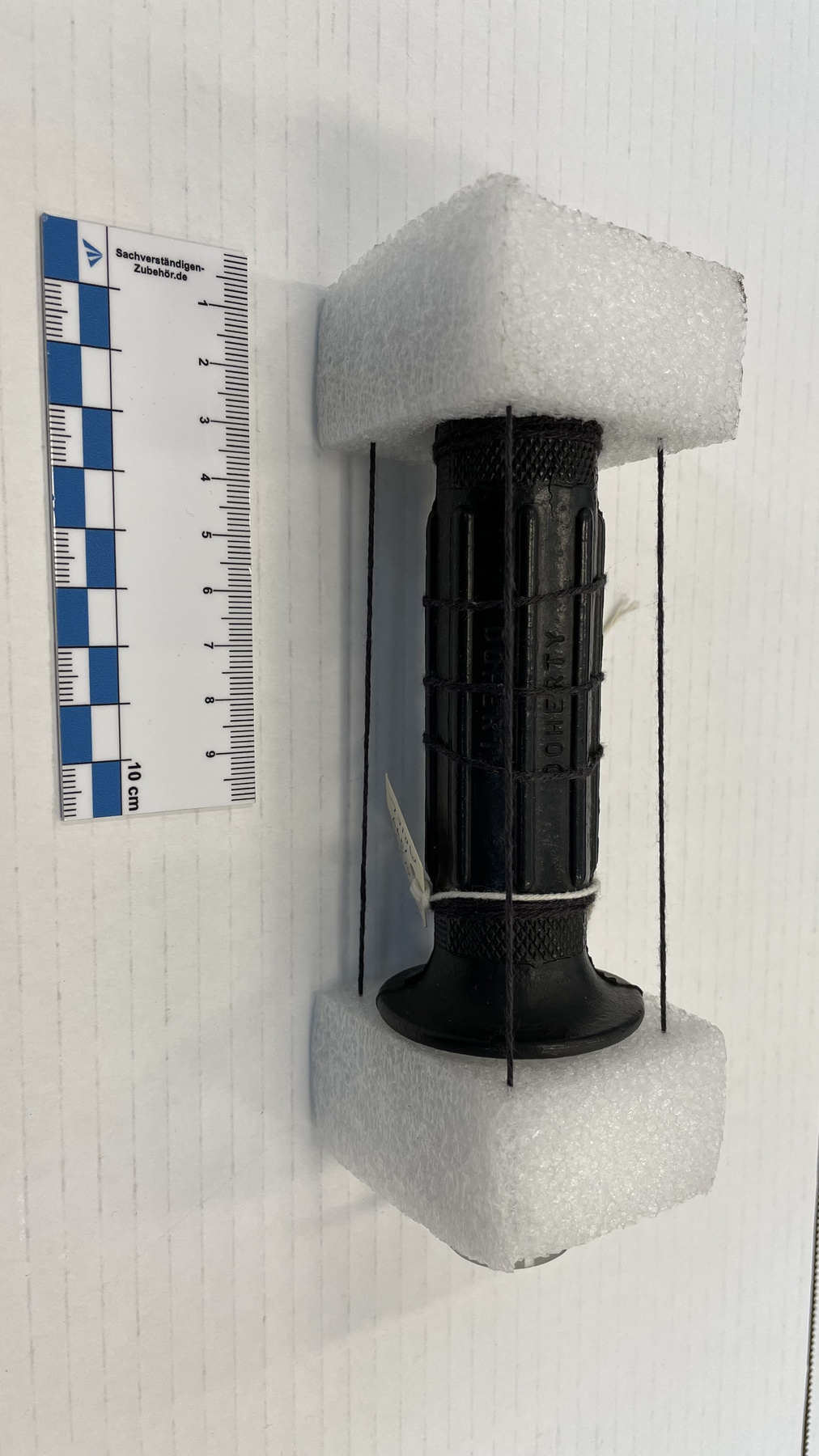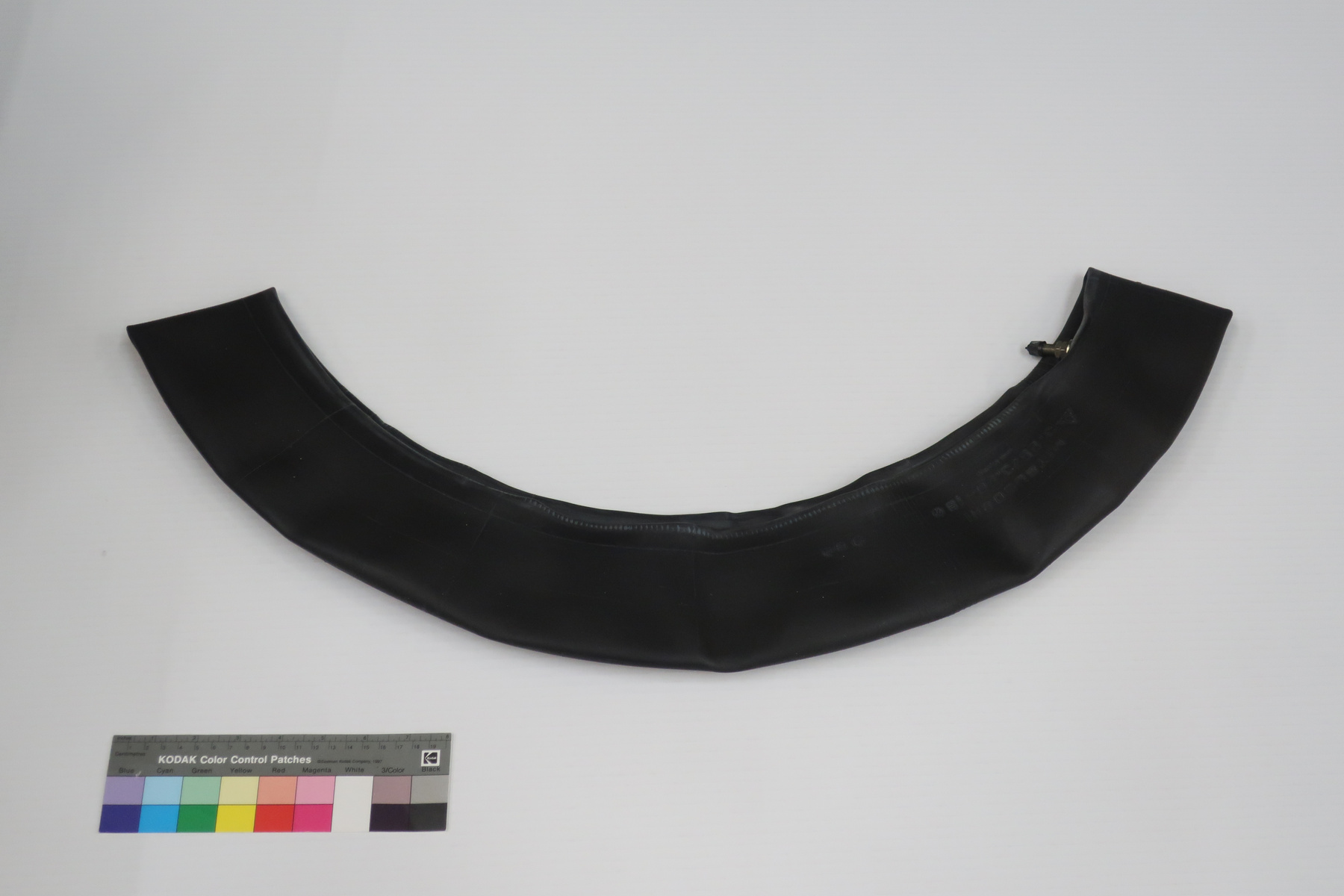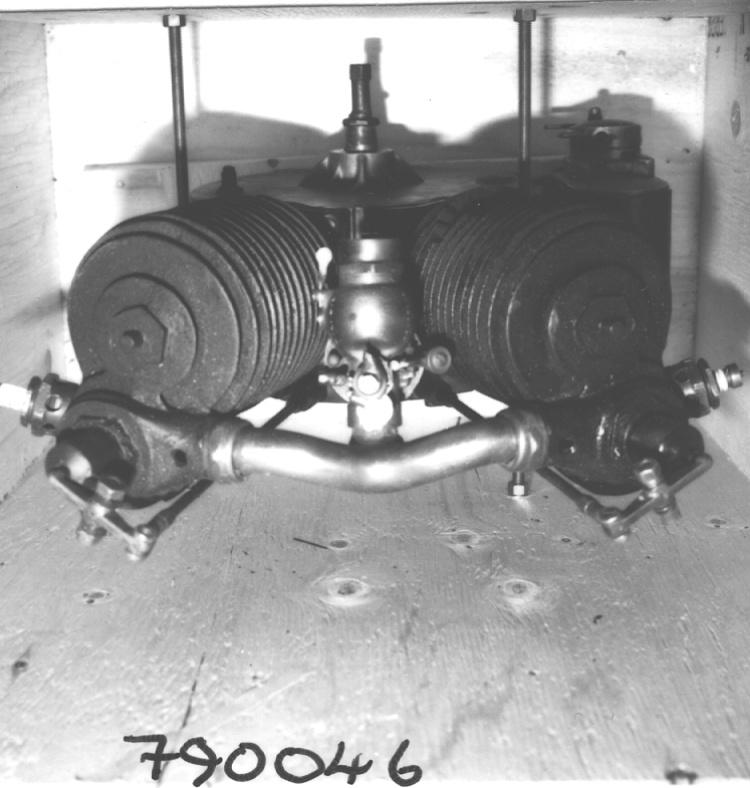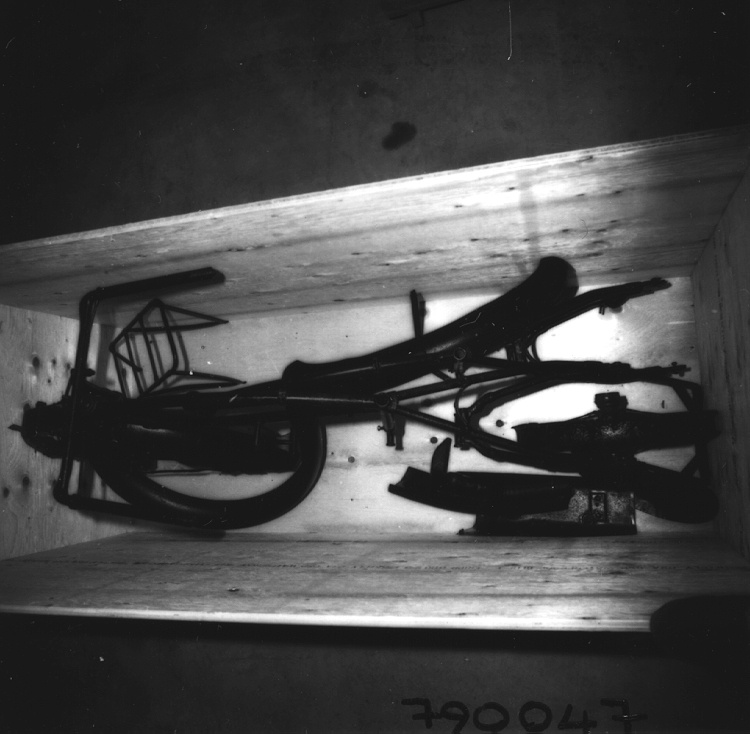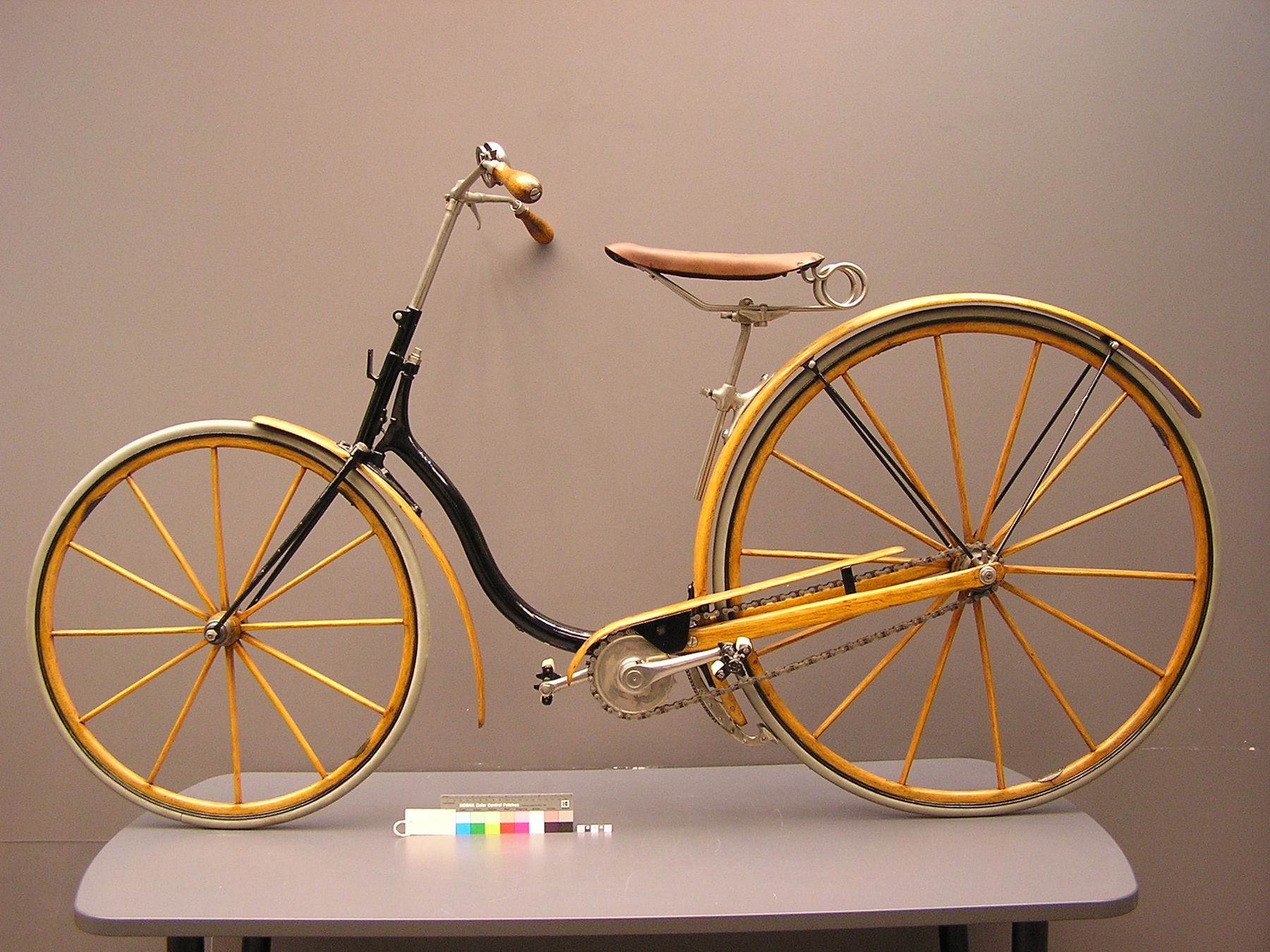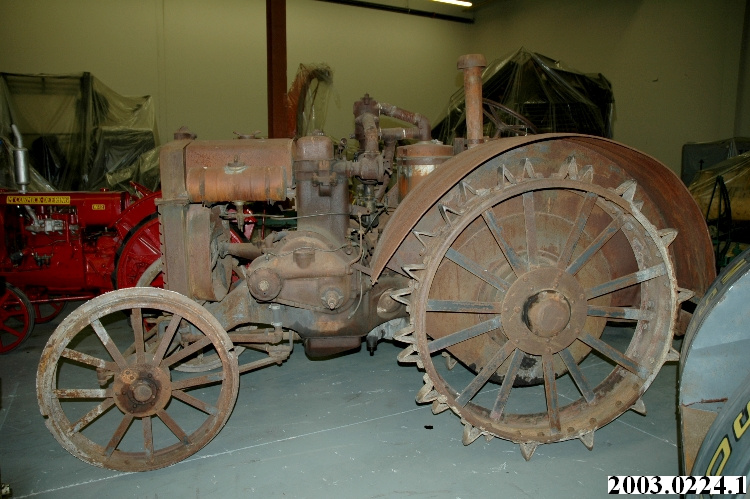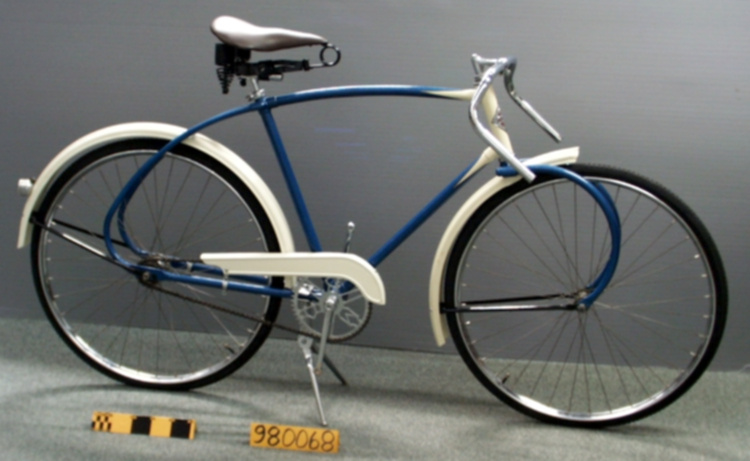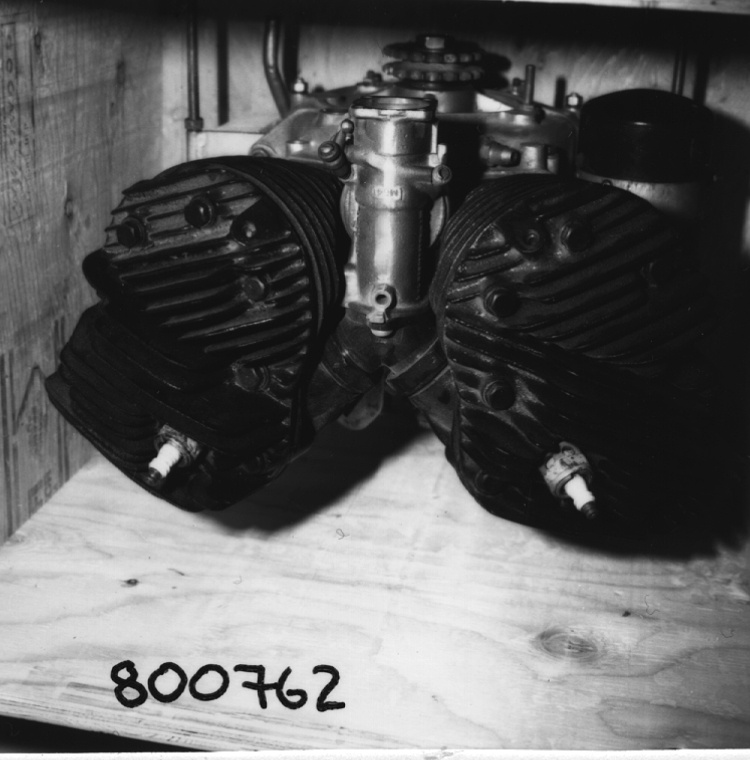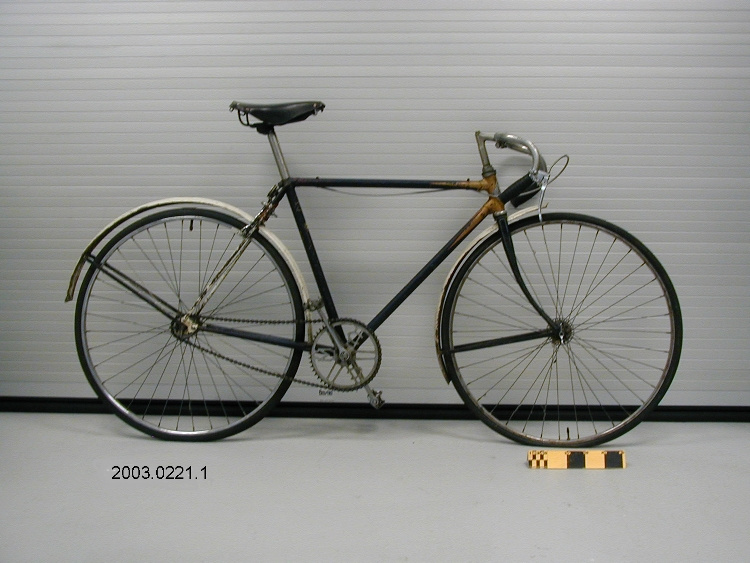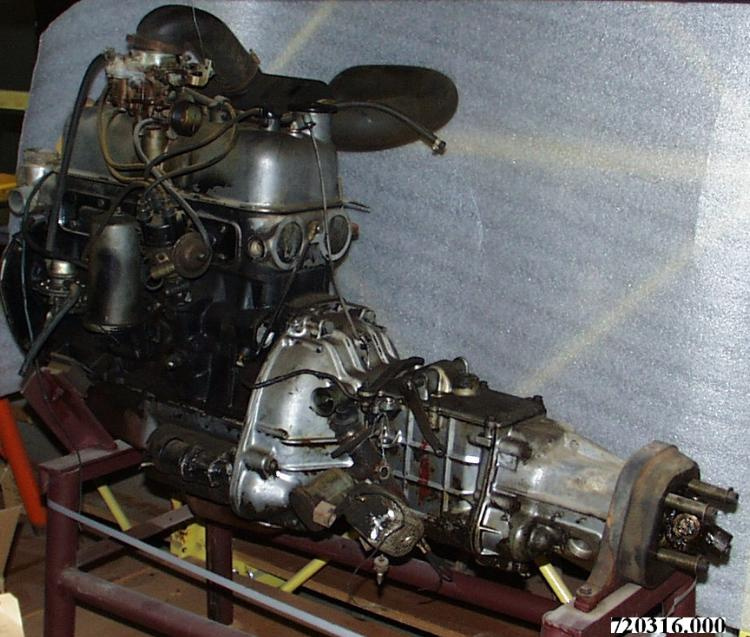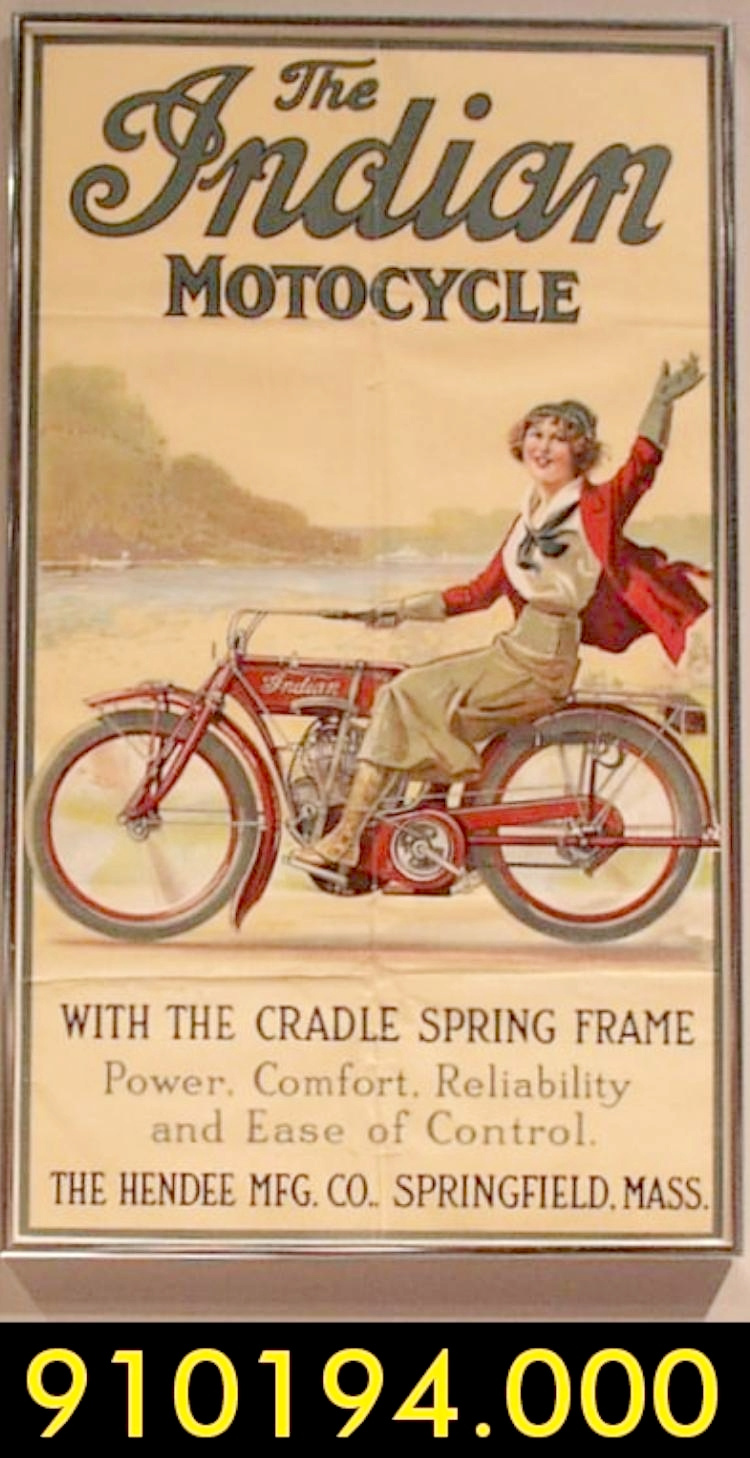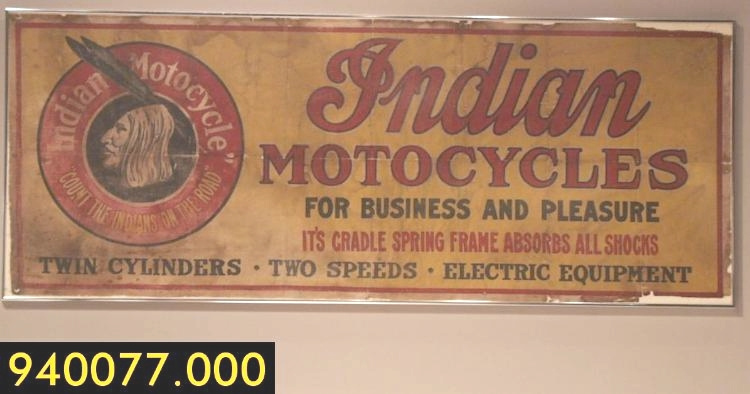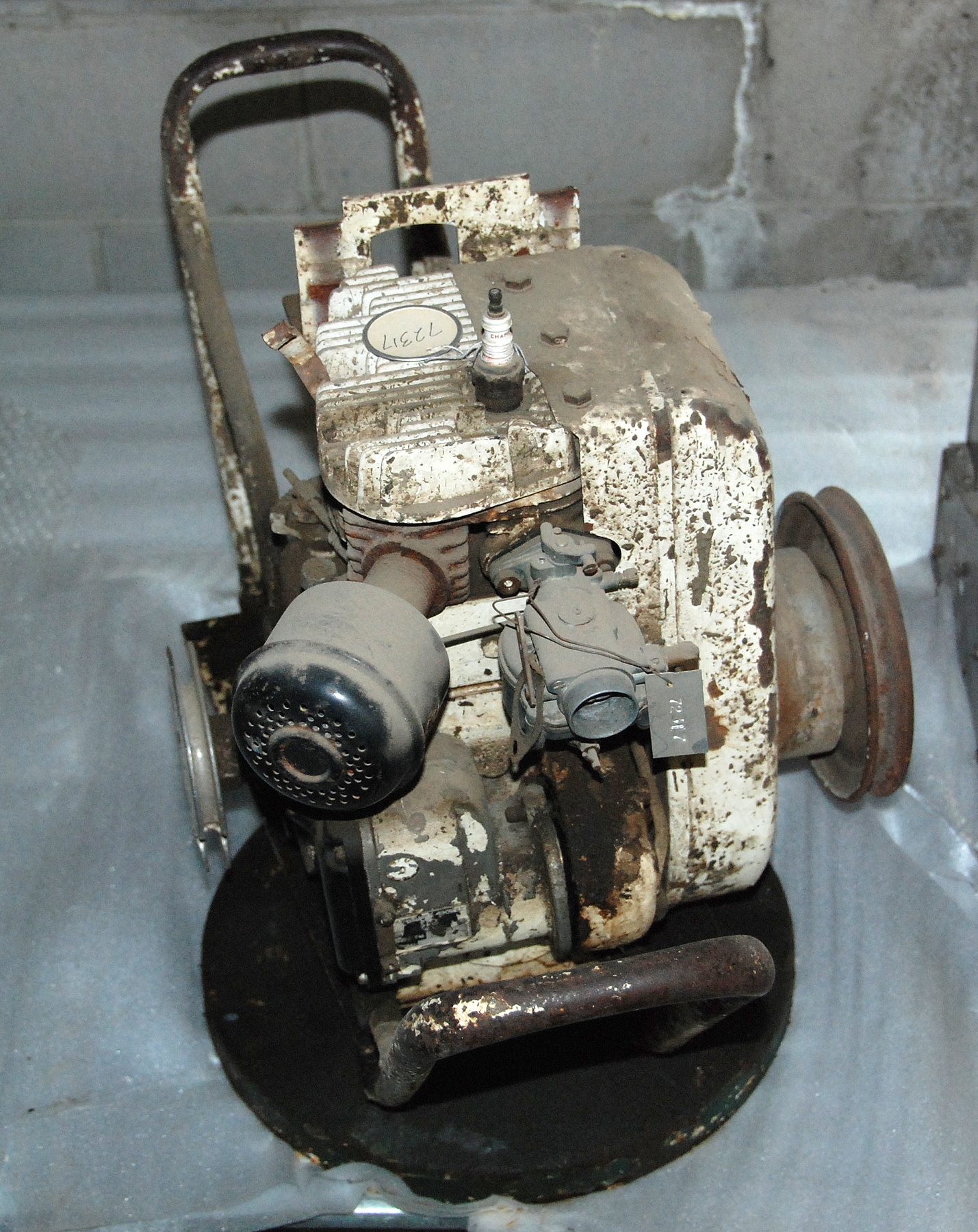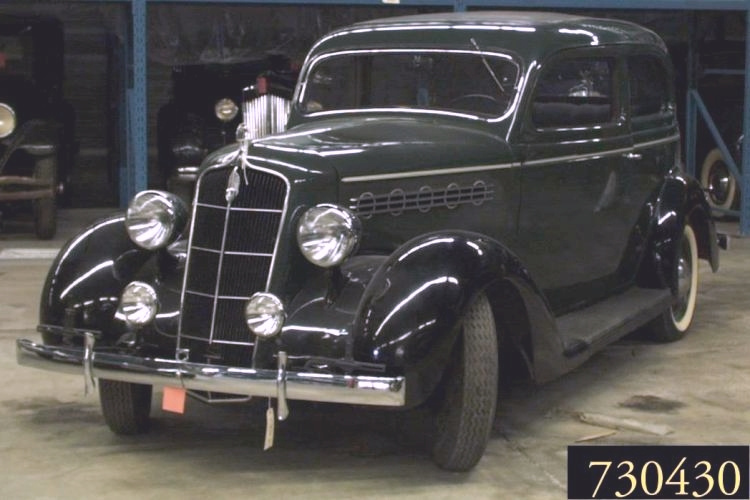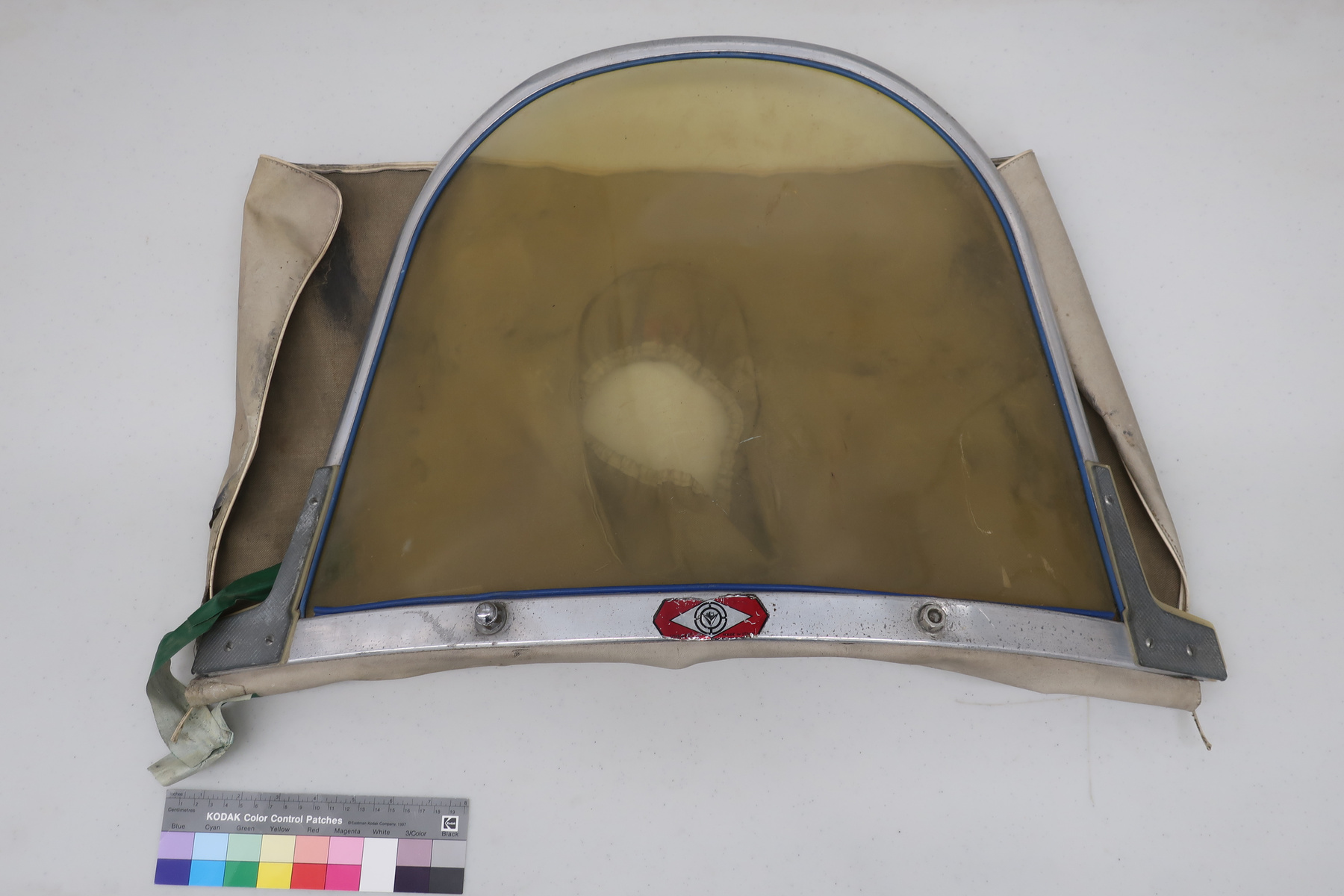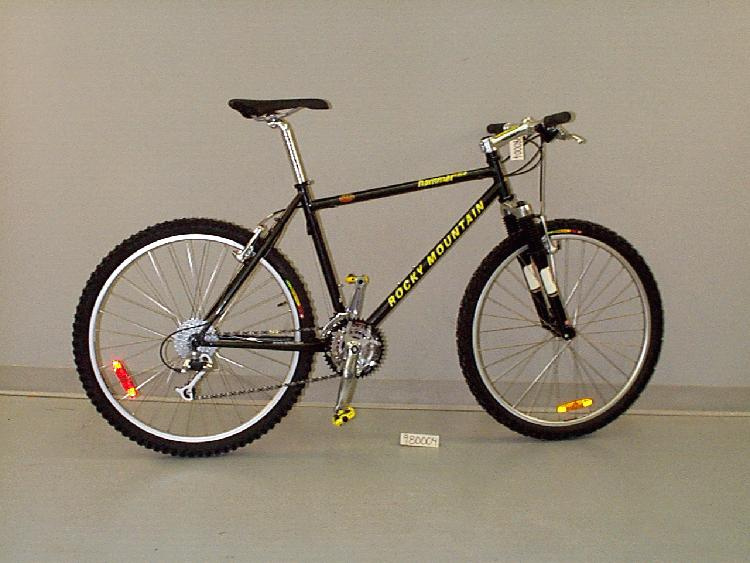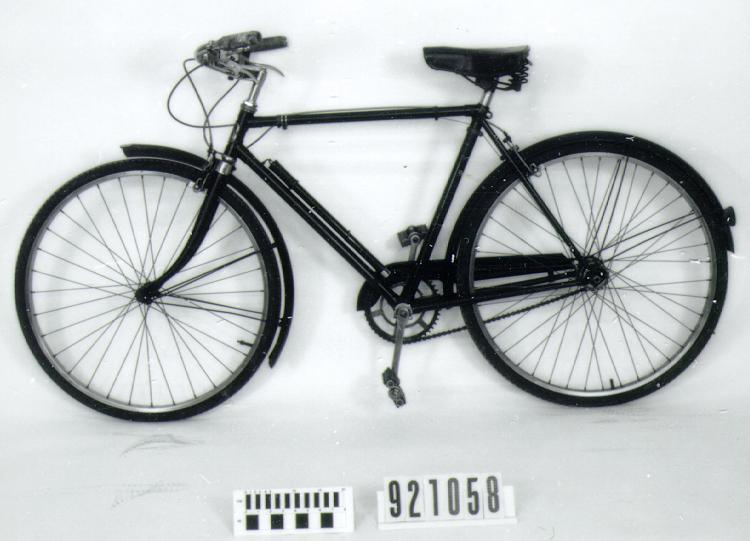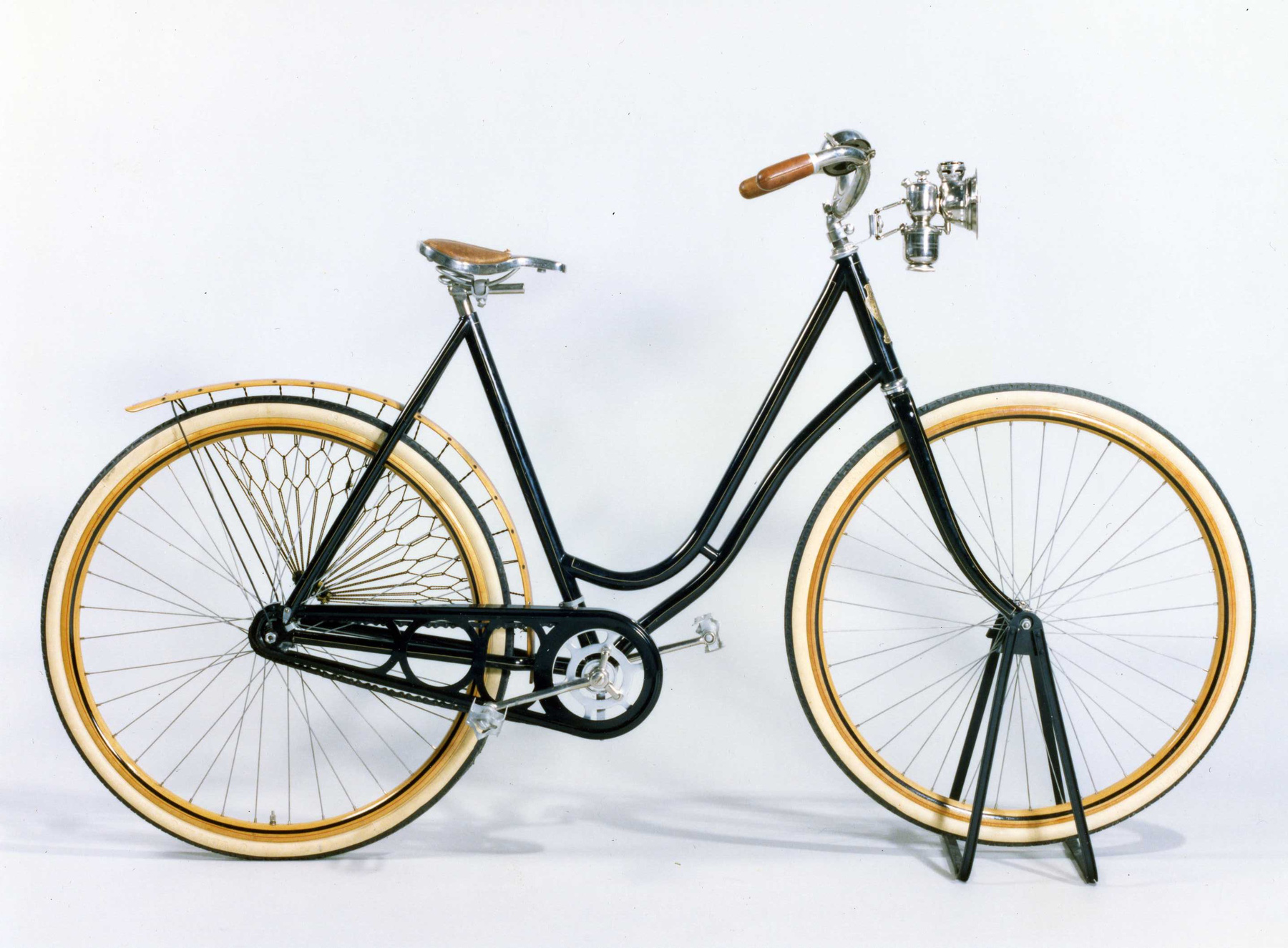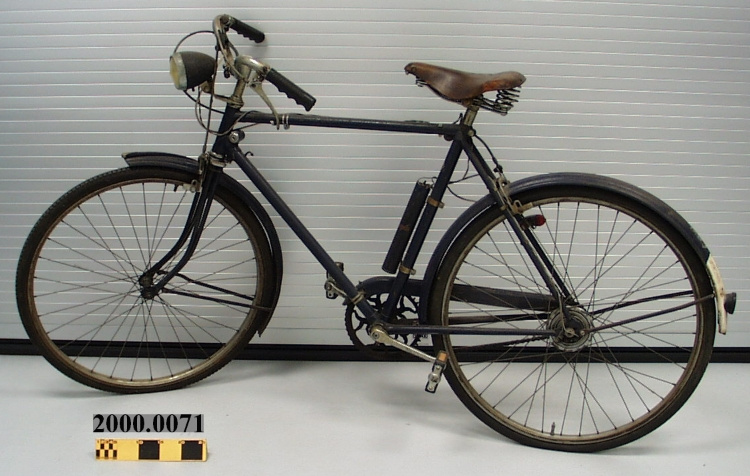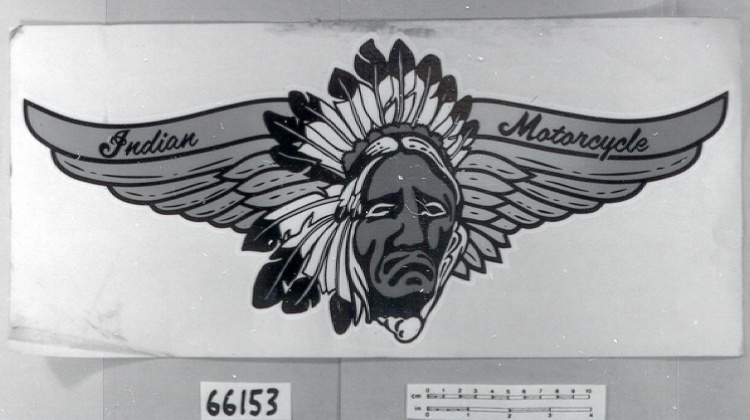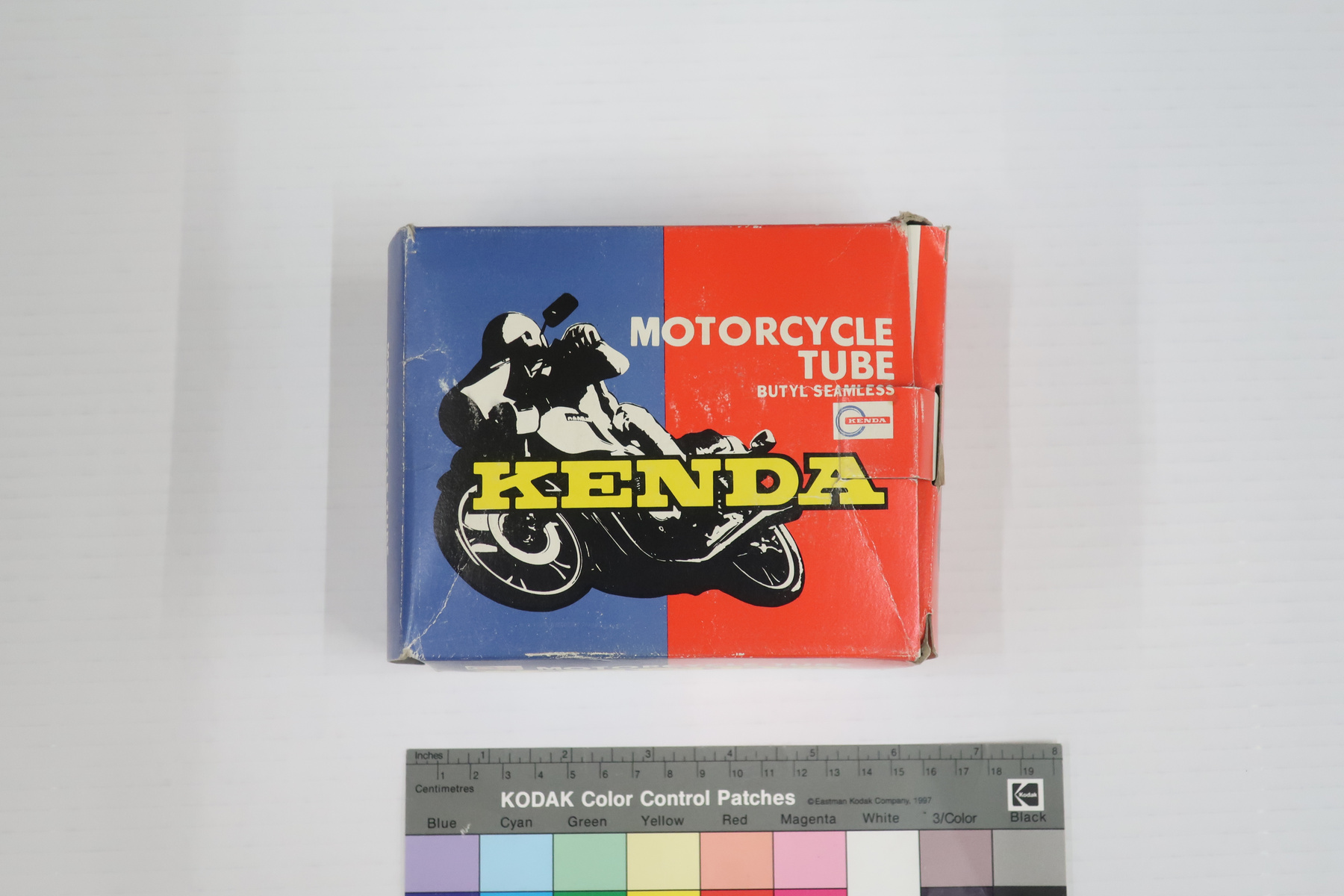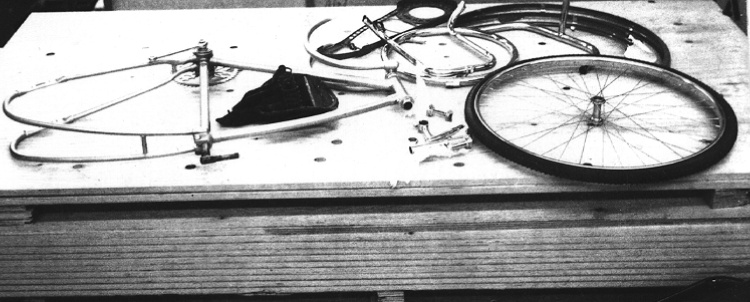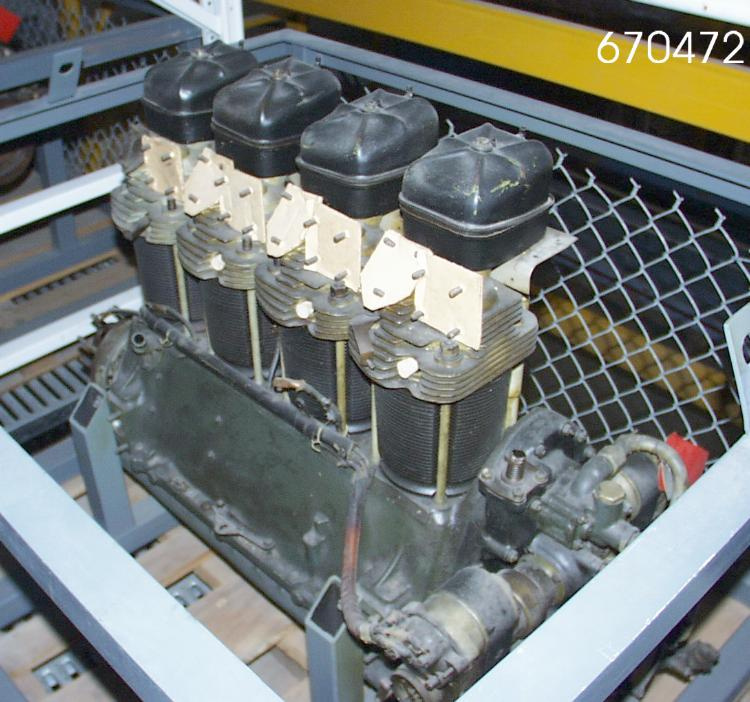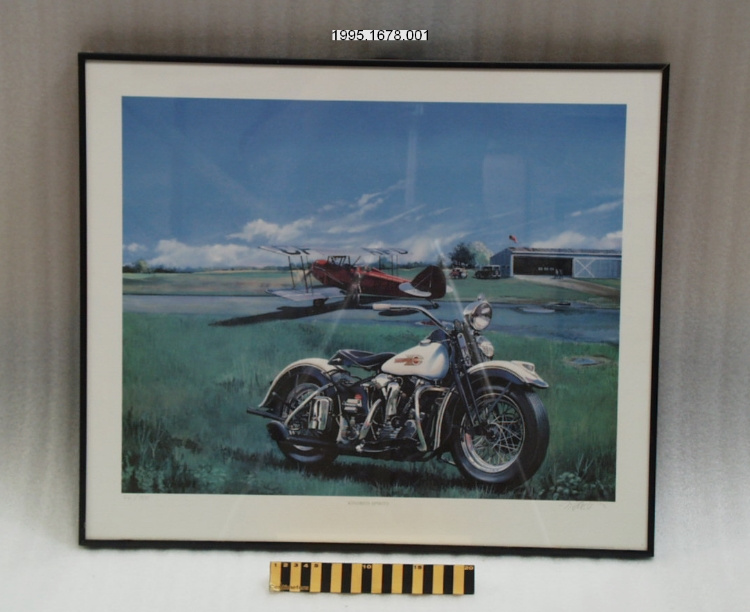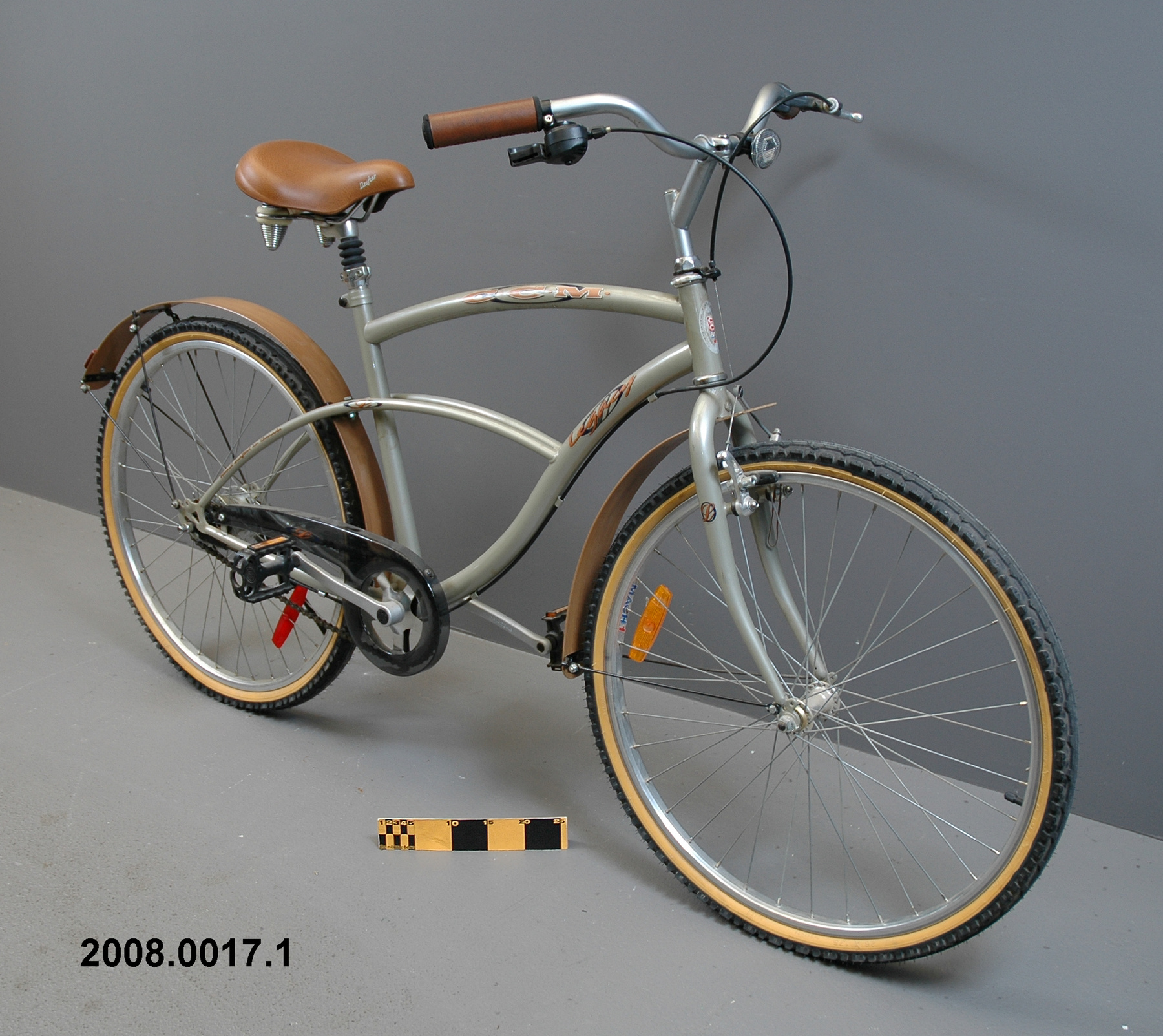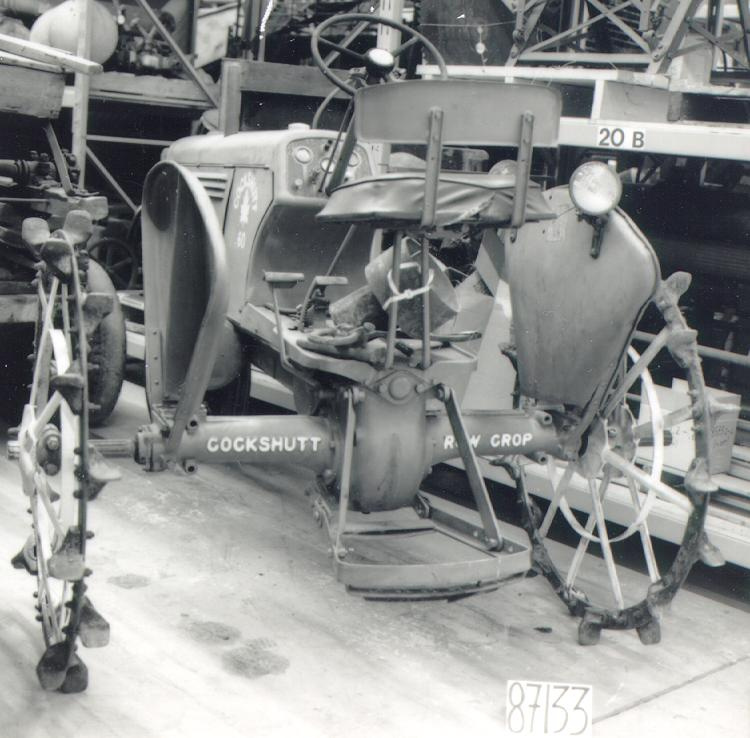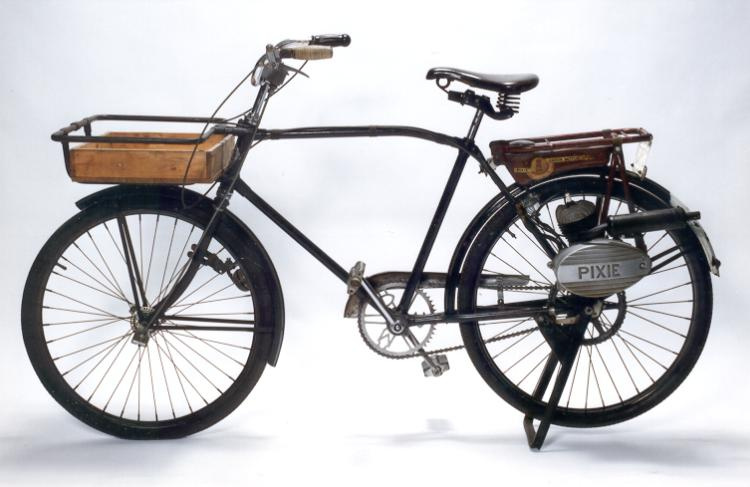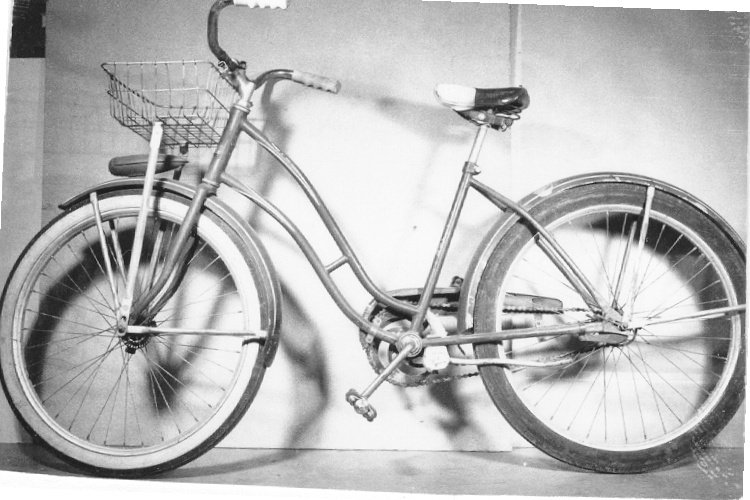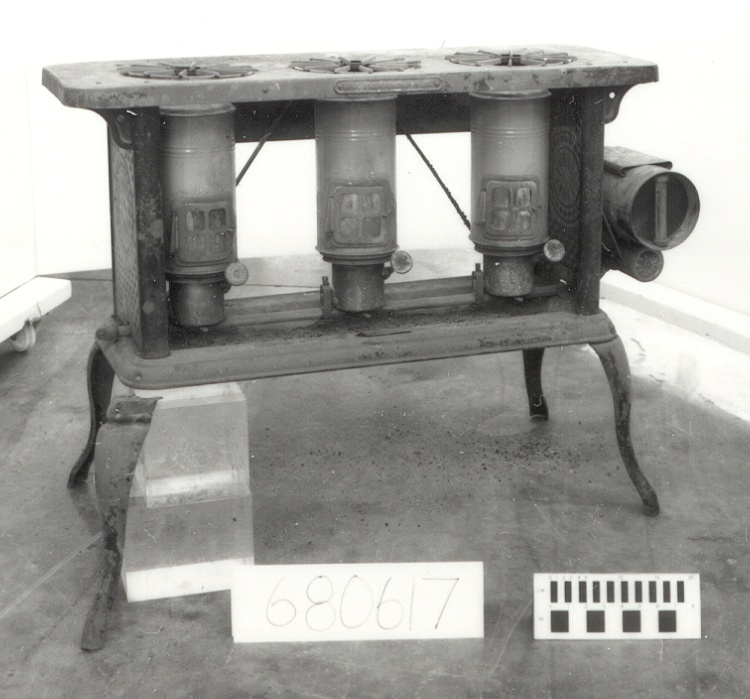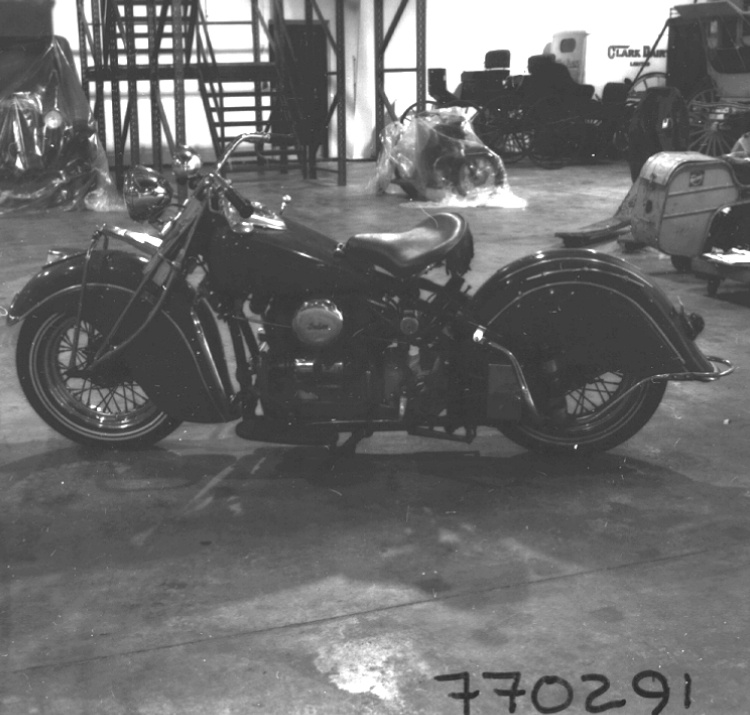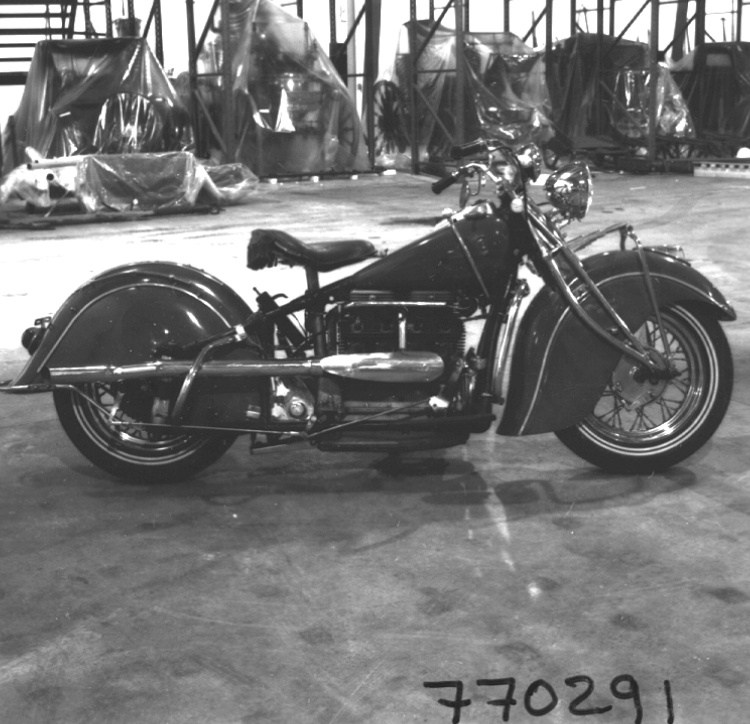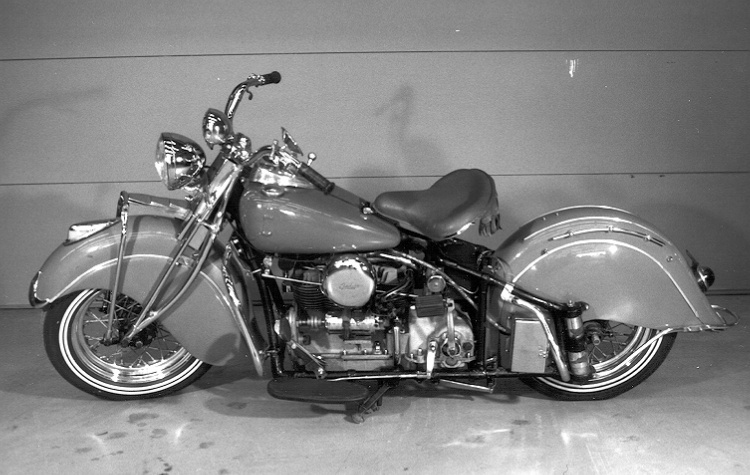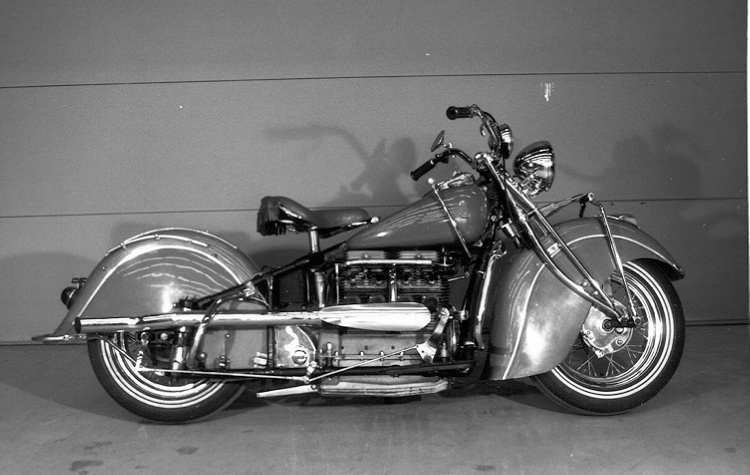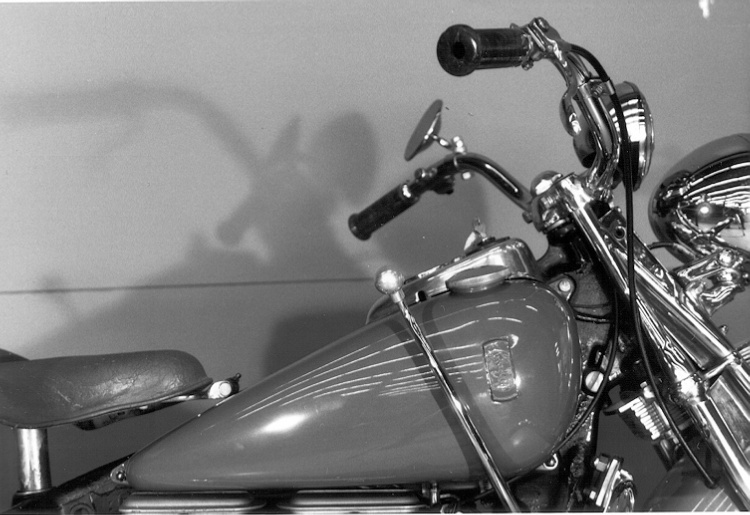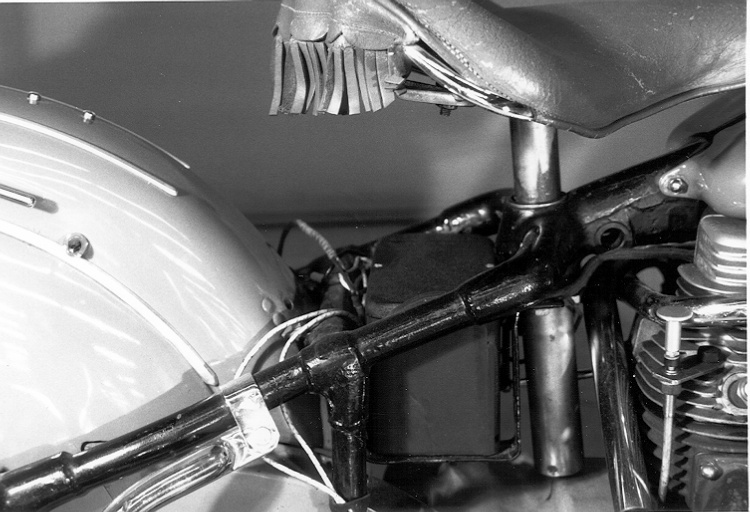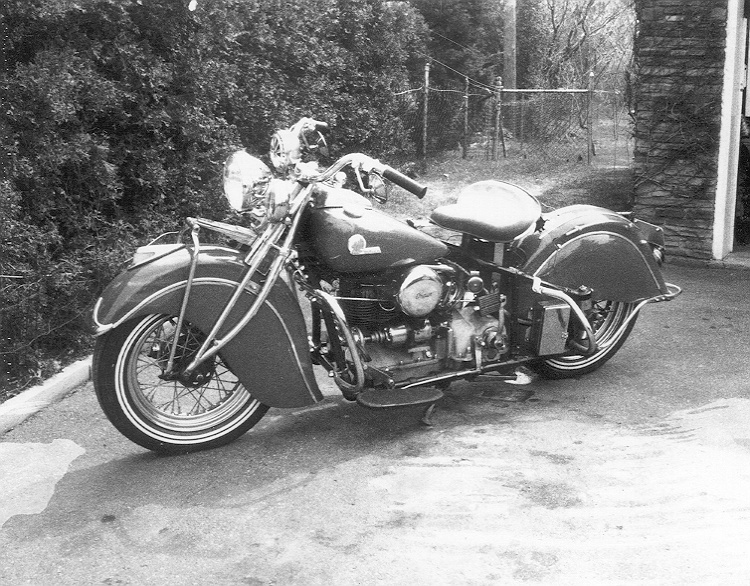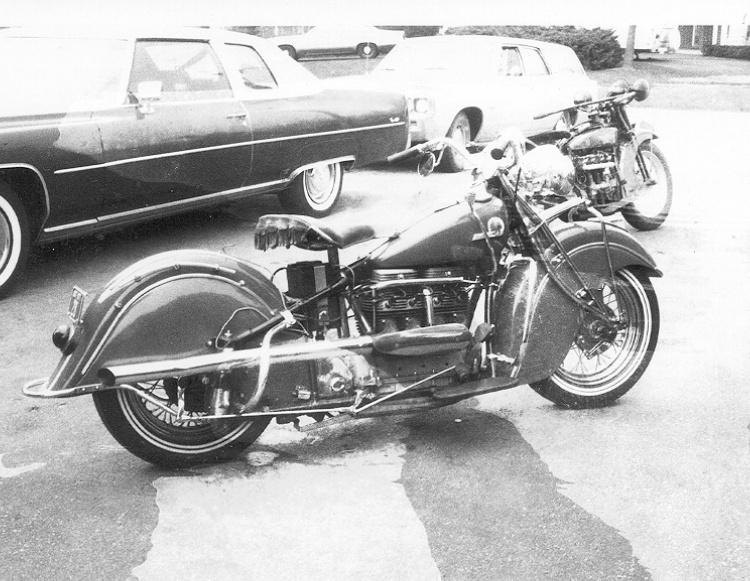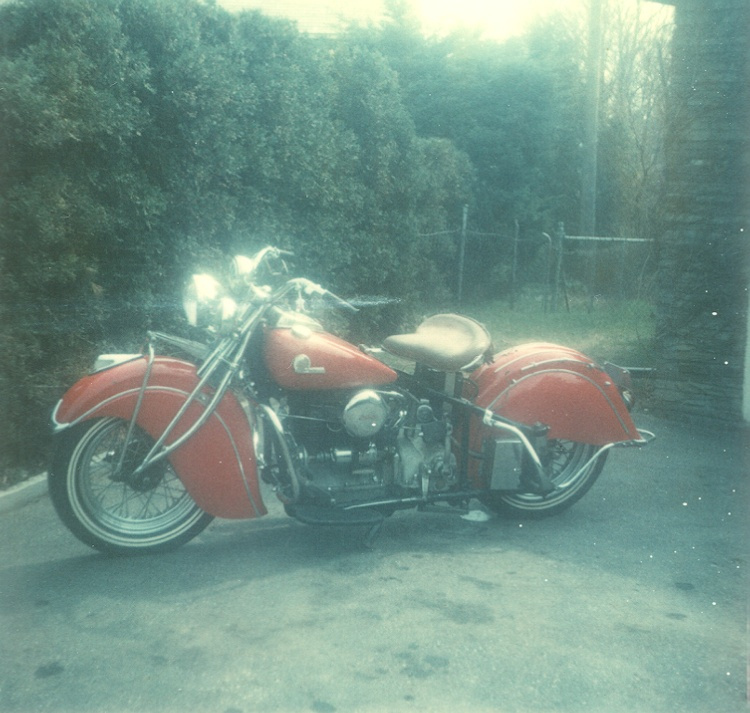Motocyclette
Utiliser cette image
Puis-je réutiliser cette image sans autorisation? Oui
Les images sur le portail de la collection d’Ingenium ont la licence Creative Commons suivante :
Copyright Ingenium / CC BY-NC-ND (Attribution-NonCommercial 4.0 International (CC BY-NC 4.0)
ATTRIBUER CETTE IMAGE
Ingenium,
1977.0291.001
Permalien:
Ingenium diffuse cette image sous le cadre de licence Creative Commons et encourage son téléchargement et sa réutilisation à des fins non commerciales. Veuillez mentionner Ingenium et citer le numéro de l’artefact.
TÉLÉCHARGER L’IMAGEACHETER CETTE IMAGE
Cette image peut être utilisée gratuitement pour des fins non commerciales.
Pour un usage commercial, veuillez consulter nos frais de reproduction et communiquer avec nous pour acheter l’image.
- TYPE D’OBJET
- Cruiser/4 cyl/1265cc/4cyc
- DATE
- 1940
- NUMÉRO DE L’ARTEFACT
- 1977.0291.001
- FABRICANT
- INDIAN MOTORCYCLE CO.
- MODÈLE
- FOUR
- EMPLACEMENT
- Springfield, Massachusetts, United States of America
Plus d’information
Renseignements généraux
- Nº de série
- S/O
- Nº de partie
- 1
- Nombre total de parties
- 2
- Ou
- S/O
- Brevets
- S/O
- Description générale
- TUBULAR STEEL FRAME/ CHROMED HANDLE BARS, SAFETY GUARDS FRONT & REAR, HEADLIGHT CASE, EXHAUST PIPE/ METAL PARTS/ LEATHER SEAT/ RUBBER TIRES, FOOTPADS/ GLASS HEADLIGHT LENS
Dimensions
Remarque : Cette information reflète la taille générale pour l’entreposage et ne représente pas nécessairement les véritables dimensions de l’objet.
- Longueur
- 254,0 cm
- Largeur
- 91,4 cm
- Hauteur
- 106,0 cm
- Épaisseur
- S/O
- Poids
- S/O
- Diamètre
- S/O
- Volume
- S/O
Lexique
- Groupe
- Transports terrestres motorisés
- Catégorie
- Véhicules motocyclettes
- Sous-catégorie
- S/O
Fabricant
- Ou
- INDIAN
- Pays
- United States of America
- État/province
- Massachusetts
- Ville
- Springfield
Contexte
- Pays
- Inconnu
- État/province
- Inconnu
- Période
- Inconnu
- Canada
-
``American motorcycles never challenged the supremacy of the automobile; manufacturers could not compete economically with Henry Ford`s mass-produced Model T. After boom years in the early 1890s, the motorcycle market contracted rapidly and by the 1920s only three major manufacturers remainds, of which Indian was the largest. When Excelsior stopped production in 1931, Harley-Davidson and Indian were left. At that time, Indians were considered to have the better design, and Harleys to be the more reliable bike; riders were fiercly loyal to their chosen brand. Indian`s founders had left by 1916 and ownership changed several times. For a while, Indian was part of the group that owned the Du Pont paint company, a factor which influenced color schemes used for the bikes.`` (Huge Wilson, ``The Ultimate Motorcycle Book``, 36.) There were four prominent four-cylinder American motorcycles in the early part of the century (1927-1935): the Pierce, the Cleveland, the Henderson and the Ace. The Henderson brothers worked in the Excelsior-Henderson organization for a couple of years, and then left to design and produce the Ace. In 1927 Indian obtained the right to the ACE motorcycle, adding a four-cylinder machine to their range.Despite the low demand for luxury motorcycles during the Great Depression, Indian not only continued production for the Four (Cleveland and Henderson had ceased their production in 1931), but continued to develop the motorcycle. One of the less popular versions of the Four was the "upside down" engine on the 1936-1937 models that consisted of a unique exhaust over-intake (exhaust valve in the cylinder head and the intake valve in the block) cylinder head. While in theory, this was said to improve fuel vaporization and be more powerful, the new system made the cylinder, and the rider's inseam, very hot and required the exhaust valvetrain to be frequently adjusted. As a result, sales of the Inadian Four dropped. The introduction of dual carburetors in 1937 did not revive sales or interest in this motorcycle. The design was returned to the original configuration in 1938. Fours were expensive to build and investment in them, rather than V-twins, contributed to Indian's demise. The Indian Four was discontinued in 1942. - Fonction
-
GENERAL TRANSPORTATION - Technique
-
Like the Chief, the Four was given large, skirted fenders and plunger rear suspension in 1940. The weight of the 1940's Four also climbed to 568 lbs., 36 pounds more than the rigid-frame from 1939. Both the Chief and the Four were fitted with a plunger sprung rear frame, along contemporary automotive lines, with deep valances that extended low enough so that stays were no longer fitted to suppoet them, the valances being bolted to the frame in the rear and to the lower fork legs in the front. - Notes sur la région
-
Inconnu
Détails
- Marques
- STAMPED INTO ENGINE CASE LEFT IS: `DC1-396/B' THE LAST LETTER NOT ON SAME PLATE AS OTHER #/ `INDIAN' STAMPED INTO AIR INTAKE CAP & PAINTED RED
- Manque
- MFR NAME PLATE FROM FUEL TANK SIDES
- Fini
- FRAME PAINTED BLACK/ FRONT & REAR FENDERS, FUEL TANK RED/ BROWN SEAT/ CHROMED FRONT FORK, HEADLIGHT CASE, EXHAUST PIPE, HANDLE BARS, SAFETY GUARDS FRONT & REAR/ BLACK TIRES, FOOT PADS
- Décoration
- S/O
FAIRE RÉFÉRENCE À CET OBJET
Si vous souhaitez publier de l’information sur cet objet de collection, veuillez indiquer ce qui suit :
INDIAN MOTORCYCLE CO., Motocyclette, 1940, Numéro de l'artefact 1977.0291, Ingenium - Musées des sciences et de l'innovation du Canada, http://collection.ingeniumcanada.org/fr/item/1977.0291.001/
RÉTROACTION
Envoyer une question ou un commentaire sur cet artefact.
Plus comme ceci
